

Learn Spanish for free
Receive a daily exercise
Thanks for submitting!
Excelling in "Lugares y Costumbres" for the IGCSE Spanish Exam
Mastering "Entorno Geográfico" in the IGCSE Spanish Exam
Understanding "Viajes de Vacaciones y Transporte" in the IGCSE Spanish Exam
Excelling in "Lenguaje en el Trabajo" for the IGCSE Spanish Exam
Mastering "Comunicación" in the IGCSE Spanish Exam
Navigating the "Empleo" Section in the IGCSE Spanish Exam
Spanish for Travelers: Must-Know Words and Phrases for Your Next Trip

Hello Super Learners!
It's that time again to pack your bags and get ready for an adventure because today at Spanish Super Tutor, we're brushing up on Spanish for travelers! Whether you're jet-setting to the sandy beaches of Spain or exploring the ancient ruins of Mexico, having a handy set of Spanish words and phrases can transform your trip from good to great. In this post, we'll cover must-know expressions that will help you navigate airports, hotels, restaurants, and those all-important social interactions. Let's make sure language barriers don't hold you back from the trip of a lifetime. ¡Vamos!
Navigating the Airport and Flights
Air travel can be stressful, but with these phrases, you'll breeze through the airport like a seasoned traveler:
¿Dónde está el aeropuerto? (Where is the airport?)
Disculpe, ¿dónde está el aeropuerto? (Excuse me, where is the airport?)
¿Cuándo sale mi vuelo? (When does my flight depart?)
¿Podría decirme cuándo sale mi vuelo? (Could you tell me when my flight departs?)
¿Este asiento está libre? (Is this seat free?)
Perdón, ¿este asiento está libre? (Excuse me, is this seat free?)
Finding Accommodation
A good night's sleep is crucial when traveling. Here's how to secure your spot to dreamland:
Tengo una reserva a nombre de... (I have a reservation under the name of...)
Buenas tardes, tengo una reserva a nombre de John Smith. (Good afternoon, I have a reservation under the name of John Smith.)
¿Cuánto cuesta la habitación por noche? (How much is the room per night?)
Me gustaría saber, ¿cuánto cuesta la habitación por noche? (I would like to know, how much is the room per night?)
¿La habitación tiene Wi-Fi? (Does the room have Wi-Fi?)
Disculpe, ¿la habitación tiene Wi-Fi? (Excuse me, does the room have Wi-Fi?)
Ordering Food and Dining Out
Indulge in local cuisine without the fear of a menu in Spanish:
Una mesa para dos, por favor. (A table for two, please.)
Buenas noches, una mesa para dos, por favor. (Good evening, a table for two, please.)
¿Me podría traer el menú? (Could you bring me the menu?)
Perdón, ¿me podría traer el menú? (Excuse me, could you bring me the menu?)
La cuenta, por favor. (The bill, please.)
Cuando termine, la cuenta, por favor. (When I'm finished, the bill, please.)
Exploring and Socializing
Meet new people and discover hidden gems with these interaction starters:
¿Cómo llego a...? (How do I get to...?)
Disculpe, ¿cómo llego al museo? (Excuse me, how do I get to the museum?)
Me gustaría un mapa de la ciudad. (I would like a city map.)
Buenos días, me gustaría un mapa de la ciudad. (Good morning, I would like a city map.)
¿Puede tomar una foto, por favor? (Can you take a picture, please?)
Perdón, ¿puede tomar una foto, por favor? (Excuse me, can you take a picture, please?)
Emergency Phrases
In case of unexpected situations, it's important to know how to ask for help:
Necesito ayuda. (I need help.)
Necesito ayuda, por favor. (I need help, please.)
¿Dónde está el hospital? (Where is the hospital?)
Urgente, ¿dónde está el hospital? (Urgent, where is the hospital?)
He perdido mi pasaporte. (I have lost my passport.)
He perdido mi pasaporte, ¿qué hago ahora? (I have lost my passport, what do I do now?)
Travelers, these phrases are just the beginning of your Spanish journey. With Spanish Super Tutor , you can dive deeper into the language and culture to prepare for your travels even more thoroughly. We offer tailored classes and courses that focus on practical Spanish use, especially for travelers. And remember, today's world offers countless opportunities to learn Spanish online, with plenty of free resources and dedicated teachers like us. What sets us apart is the personalized attentionwe give to our students, ensuring not just learning, but an enjoyable and dynamic experience that sticks with you as you explore the Spanish-speaking world.
Learning a new language is not just about memorizing words; it's about connecting with people, understanding their culture, and creating unforgettable memories. With Spanish Super Tutor , we ensure that your learning experience is as vibrant and lively as the destinations you'll visit. So, pack your phrases along with your essentials, and let's turn you into a confident Spanish speaker ready to take on the world!
Why Spanish Super Tutor Stands Out
In the sea of options to learn Spanish, our commitment to your success is what makes us unique. We don't just teach; we mentor, guide, and accompany you on your journey to becoming a Spanish pro. Our interactive online classes are designed to fit your schedule and learning style, making Spanish accessible to everyone, everywhere.
Join Our Community of Super Learners
If you're excited to learn more and become part of a community that cheers each other on, sign up for our courses. Engage with fellow travelers, share stories, and get that real-time practice that's so critical to mastering a language. With Spanish Super Tutor, you're never alone on your learning adventure.
Before we say adiós, remember, learning Spanish is easier than ever before with many online classes and resources. But what you'll get with Spanish Super Tutor is more than just lessons; it's a personalized learning experience that will have you speaking Spanish like a local in no time.
Book Your Spanish Lessons Today
Ready to take the next step? Visit our website and book your Spanish lessons today. Let's make your travel dreams a reality with the power of language!
Hasta luego, Super Learners!
Miguel Marina
Spanish Super Tutor
Keywords: Spanish for travelers, learn Spanish online, Spanish phrases, travel vocabulary, Spanish lessons, online Spanish tutor
Tags: #SpanishForTravelers , #LearnSpanishOnline , #SpanishLanguage , #TravelWithConfidence , #SpanishSuperTutor
Hashtags: #SpanishLearning #TravelSpanish #LanguageAdventure #SpanishTutorOnline #SpeakSpanish #LanguageJourney
- Phrases you must know
Related Posts
10 Habits That Will Transform You Into a Healthier Person
10 Habits That Will Transform You Into a Healthier Person Hello, Super Learners! Today, we're about to embark on a journey towards a healthier, happier you. In this post, we will explore ten essential
10 Foods to Avoid for a Heart-Healthy Diet
10 Foods to Avoid for a Heart-Healthy Diet Hello, Super Learners! Ready to dive into a vital topic that impacts not just your language skills but your overall health? Today, we're exploring ten foods
10 Essential Destinations to Speak Spanish with Natives
10 Essential Destinations to Speak Spanish with Natives Hello, Super Learners! Today, we're diving into a culturally rich journey to explore ten must-visit destinations where you can enhance your Span
Not sure which program to pick? Compare programs
105 Spanish Travel Phrases To Know For Your Next Trip

Get our free email course, Shortcut to Conversational.
Have conversations faster, understand people when they speak fast, and other tested tips to learn faster.
Traveling to a Spanish speaking country without knowing at least a few Spanish travel phrases is a bad idea.
Even the simplest of situations can become an ordeal, whether it’s understanding directions, ordering food in a restaurant, or if worse comes to worst, handling an emergency situation.
That’s not to say that you won’t have a good trip – just that it’s more likely to come with added stress when you can’t speak the local language.
On the flip side, you don’t need to speak perfectly fluent Spanish in order to communicate.
Learning even a couple of basic Spanish travel phrases and words will go a long way in preparing you for most scenarios you’ll encounter when traveling.
Not to mention automatically be treated better by the locals who’ll appreciate the effort you’re making to speak their language.
Plus, nobody wants to be “that tourist ” who makes zero effort to speak Spanish, and is resigned to speaking painfully slow English and using excessive pointing as a last resort to be understood.
We put together a list of useful Spanish travel phrases and vocabulary for people who find themselves in a Spanish speaking environment and quickly need to learn survival Spanish.
Below, you’ll find vocab and native audio pronunciations for:
- Basic phrases
Getting around
- Understanding directions
- Ordering food in a restuarant
- Dealing with an emergency
- Question words
- Telling the time

Basic Spanish Phrases
Hola – Hello
Buenos días – Good day/Good morning
Buenas tardes – Good afternoon
Buenas noches – Goodnight
¿Cómo estás? – How are you?
Por favor – Please
Gracias – Thank you
Me llamo… – My name is…
¿Habla inglés? – Do you speak English?
No hablo español – I don’t speak Spanish
¿Cómo se llama? – What is your name?
Disculpe – Excuse me/I’m sorry
No sé – I don’t know
¿Cómo se dice? – How do you say this?
No entiendo – I don’t understand
¿Qué hora es? – What time is it?
Hable más lento – Speak slowly

Download the expanded guide to read later
This page gives you a great overview of the most important concepts and strategies, but for the full, expanded guide, click the button below:
These are likely to be your go-to Spanish travel phrases when getting around. Even when you don’t know the Spanish for the subject, these phrases can be combined with gentle pointing, and still come across as very polite.
Me gustaría – I would like
Quiero – I want
Necesito – I need
¿Dónde queda? – Where is?
¿Cuánto cuesta?– How much does it cost?
¿Qué precio tiene? – How much does it cost?
¿Tiene..? – Do you have..?
Yo tengo- I have
Yo no tengo – I don’t have
Qué significa (subject)…? – What does…(subject).. mean?
¿Como llego a..? – How do I get to…?
You’ll want explore your new surroundings, so best to memorize the Spanish for some key places.
El aeropuerto – Airport
El banco – Bank
La biblioteca – Library
La cafetería – Café
El hotel – Hotel
El terminal – Terminal
La estación de bomberos – Firestation
La estación de ferrocarril – Railway station
El estadio – stadium
La farmacia – Pharmacy
La gasolinera – Petrol station
El hospital – Hospital
La librería – Bookshop
El mercado – Market
El museo – Museum
La parada – Bus stop
La policía – Police station
El restaurante – Restaurant
La tienda – Shop, store.
El Centro Comercial – shopping centre
Understanding Directions in Spanish
Understanding directions in a different language is always a challenge, but knowing a couple of these key phrases will help you if the situation calls for it. Either that, or you’ll end up with a general idea of where you need to go.
¿Entiende? – Do you understand?
A la derecha – To the right
A la izquierda – To the left
Derecho – Straight ahead
En la esquina – At the corner
A una cuadra – One block away
Hacia el Norte/Sur/Este/Oeste – To the North/South/East/West
Small talk is an essential part of everyday life, and Spanish speaking countries are no different.
Use these Spanish phrases to break the ice when you meet a local.
¿Cómo te va? – How’s it going?
¿Cómo te ha ido? – How’ve you been?
Estoy bien ¡Gracias! – I’m fine, thanks
¿Y tú? – And you?
Bien/Más o menos. – Good/So-so
¿Qué tal? – How are you?
¿Qué pasa? – What’s happening?
¿Qué haces? – What are you doing?
Ordering Food In Spanish
For obvious reasons, it’s always a good idea to be polite to your waiter in a restaurant.
¿Me trae…? – Could I have …?
¿Cuál es el menú de hoy? – What is today’s menu?
¿Qué me recomienda? – What do you recommend?
¿Acepta tarjeta de crédito? – Do you accept credit card?
La cuenta, por favor – Check, please
Soy alérgico – I’m allergic
Soy vegetariano – I’m vegetarian
Emergency Spanish
Knowing a couple of key emergency phrases will make things much easier if worst case scenario happens, and you find yourself in trouble.
¿Puede ayudarme? – Can you help me?
Necesito ayuda – I need help
¡Ayuda! – Help!
Estoy perdido – I’m lost
¡Llame a la policia! – Call the police!
¡Llame una ambulancia! – Call an ambulance!
Quiz: Places, Directions, and Emergency
Before we move on, why don’t you see how much you remember from these three sections by watching this quiz video. You’ll be shown a selection of Spanish travel phrases and given a few moments to think of its English equivalent before we reveal the translation. Good luck!

Question Words In Spanish
Just like the “Getting Around” phrases, these Spanish question words will be useful even when you don’t know how to say the subject of the sentence in Spanish.
¿Qué…? – what?
¿Cómo…? – how?
¿Cuándo…? – when?
¿Dónde…? – where?
¿Quién…? – who?
¿Por qué…? – why?
¿Cuál? – which?
¿Qué quieres hacer hoy? – What do you want to do today?
¿Como te sientes? – How are you feeling?
¿Cuándo vienes de nuevo? – When are you coming back?
¿Dónde está el museo? – Where is the museum?
¿Quién es? – Who is it?
¿Por qué quiere visitar este país? – Why do you want to visit this country?
¿Cuál prefieres? – Which one do you prefer?
Telling The Time
While almost everyone who travels has a smartphone these days, it’s still useful to know how to ask a stranger for the time, even if it’s only a tactic to break the ice and start a proper conversation.
¿Puede decirme la hora? – Can you tell me what time is it?
…En punto – O’ clock
…Y media/Y treinta – …And a half
…Y un cuarto/Y quince – …Plus fifteen/quarter past
Faltan … para las … – It’s … until …
Medianoche – Midnight
Mediodía – Noon
Son las doce y treinta – It’s 12.30pm
Es la una y un cuarto – It’s 1.15pm
Faltan diez para las tres – It’s 2.50pm
Son las nueve de la mañana – It’s nine in the morning
Son las tres en punto – It’s three o’clock sharp.
Falta un cuarto para el mediodía – It’s quarter to midday
Related: If you want to learn more than these basics, then read our in-depth guide on how to tell the time in Spanish.
And that’s it.
Memorize these Spanish travel phrases before visiting a Spanish-speaking country for more comfortable, stress-free interactions in Spanish.
If you are serious about learning Spanish, then I recommend reading our 119-page Ultimate Guide to Spanish , which includes 10 principles behind learning Spanish fast, strategies to learn vocabulary and grammar, achieve perfect pronunciation and much more.
You can download the entire guide, for free, right below
Get our FREE 7-day email course, Shortcut to Conversational
The exact strategies you need to become conversational in Spanish this year. Join the course now, before we come to our senses and charge for it!

Break-up lines in Spanish: 20 phrases for ending a relationship
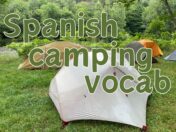
Camping in Spanish: Essential vocab for your outdoor adventure

Spanish Captions for Instagram: Level up your content en español
This blog is presented by BaseLang: Unlimited Spanish Tutoring for $179 a Month. Learn more here.
Your First Week Is Just $1.
After that, it’s just $179/mo for unlimited one-on-one tutoring.
Remember, the worst case scenario is you get a few free classes, don’t like it, and end up with an extra $20 in the bank.
Subscribe to BaseLang Bites
Supercharge your Spanish with our short weekly email, with bite-sized lessons and tips 🚀
BIENVIENDOS A BASELANG BITES!
Keep an eye out for the first lesson coming to your inbox shortly 🙌
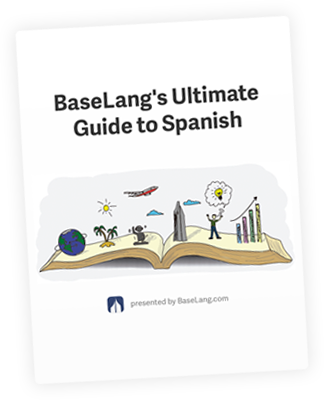
Download BaseLang's Ultimate Guide to Spanish!
Get Access Now!
Sign up today so you can get instant access to this product bundle!
COMBI Courses
- Tutor Lessons

Learn Spanish Online
- Private Lessons
- Private Tutor Lessons
- Conversation Lessons
- Spanish for Kids
- Exam Preparation
- Corporate Training
- FREE Level 1 Course
- Level 2–24 Courses
- Resource Sheets
- Beginners Course
- E-Mail Mini Courses
- Learner Blog
- Interactive Games
take our level test to determine your current knowledge of Spanish :

Let's Speak Spanish
- Our Teachers
- 24 Level System To Spanish Fluency®
- Student Reviews

Meet Our Teachers

Spanish Directions for Your Next Trip
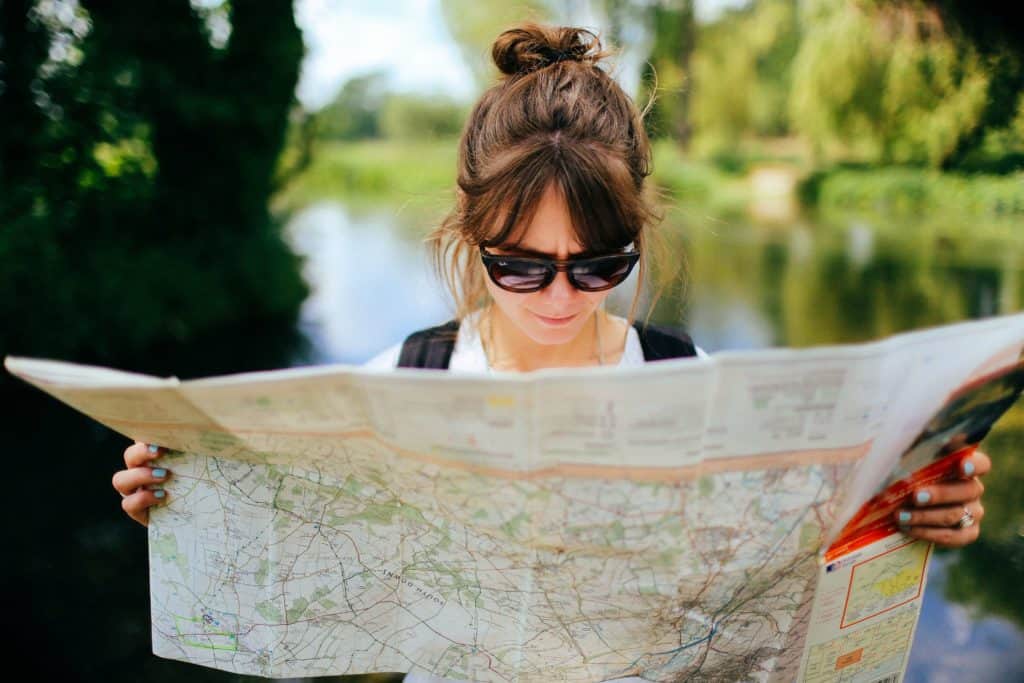
This post includes:
- Infographic about directions in Spanish
- PDF Cheat Sheet from the topic of “Spanish for Travel”
- Interactive exercises
- Audios to correct your pronunciation
How to Ask for Directions and How to Understand Directions in Spanish So That You Don’t Get Lost While Travelling!
Are you planning to visit a Spanish-speaking country and you don’t speak the language? Then it’s probably better to learn some basic Spanish . You might be surprised by how many people will not understand or speak English.
You might think that all you need is your phone to translate, communicate and navigate through a foreign country. And you might be right in normal circumstances where your phone is the ideal travel partner for any occasion.
But what happens when you run out of battery, there’s no service, the place you were looking for is nowhere to be found, or you loose your sense of direction? There are many scenarios where you might need to ask for directions in Spanish during your trip.
Where or When Do You Need to Know Spanish Directions?
Maybe you are right where you’re supposed to be, but you can’t find the entrance. Or perhaps you have a paper map with you, but you’re lost now and you have no idea where you are on the map.
In these scenarios, you’d better be able to ask for the nearest bus stop or where to find a taxi to go home. Therefore, you need to know how to ask for, understand and give directions in Spanish.
Why Do You Need to Learn to Ask For, Understand, and Give Directions in Spanish?
Asking for understandable directions in Spanish is very important if you want someone to help you find something. It only makes sense if you know how to do both – how to ask for directions in Spanish and how to understand directions in Spanish.
Imagine you’re in a foreign Spanish-speaking country, and you need to find the nearest pharmacy. You might be able to ask where the nearest pharmacy is in Spanish, but unless you know how to give directions in Spanish, you probably won’t understand the directions that will be given to you.
But don’t worry, you found the right blog! We have put together for you the most useful phrases and vocabulary related to directions. It’s time to learn some directions in Spanish and prepare for your travel – without getting lost!
Table of Content
How to approach people to ask for help, useful phrases, vocabulary of common places and locations, cardinal directions.
- Directions, Prepositions, and Adverbs
Common Spanish Verbs Used for Giving Directions
- What’s next?
- Practical Exercises
1. Asking for Directions in Spanish
Now it’s time to look at some helpful phrases and vocabulary to ask for directions in Spanish. Whether you plan to travel with your phone or a paper map, these translations might come in handy!
Learn how to approach people properly and how to ask for directions.
Also, look at the vocabulary related to common places and locations that you might want to find, the ones people might use to explain Spanish directions to you.
If you want someone to help you, show and explain where you have to go or where you will find something, you should adequately approach people .
So, if you want to ask locals for directions in Spanish, you might want to use a simple “Excuse me” or “Hello” before asking questions. Here are some greetings and phrases that will help you start conversations. Read our post “Greetings in Spanish and other Common Phrases for Daily Life” to learn more .
[mp3j track=”https://letsspeakspanish.com/wp-content/uploads/2022/03/Directions-1-3.mp3″ title=”” ind=”n” volslider=”n” flow=”y”] Perdona / Disculpa – Excuse me?
[mp3j track=”https://letsspeakspanish.com/wp-content/uploads/2022/03/Directions-2.mp3″ title=”” ind=”n” volslider=”n” flow=”y”] Hola – Hello
[mp3j track=”https://letsspeakspanish.com/wp-content/uploads/2022/03/Directions-3.mp3″ title=”” ind=”n” volslider=”n” flow=”y”] Buenos días – Good morning
[mp3j track=”https://letsspeakspanish.com/wp-content/uploads/2023/06/buenas-tardes.mp3″ title=”” ind=”n” volslider=”n” flow=”y”] Buenas tardes – Good afternoon
[mp3j track=”https://letsspeakspanish.com/wp-content/uploads/2023/06/buenas-noches.mp3″ title=”” ind=”n” volslider=”n” flow=”y”] Buenas noches – Good evening (approximately after 9 pm)
[mp3j track=”https://letsspeakspanish.com/wp-content/uploads/2022/03/Directions-7.mp3″ title=”” ind=”n” volslider=”n” flow=”y”] Tengo una pregunta – I have a question
[mp3j track=”https://letsspeakspanish.com/wp-content/uploads/2022/03/Directions-8-1.mp3″ title=”” ind=”n” volslider=”n” flow=”y”] Tengo otra pregunta – I have another question
Directions are not always easy to follow, especially when the person giving the directions speaks a language you are not used to or too fast for your level. Usually, Spanish speakers talk quite quickly, so if you have trouble understanding them, ask them to repeat themselves or talk slower. Or even both!
[mp3j track=”https://letsspeakspanish.com/wp-content/uploads/2022/03/Directions-9.mp3″ title=”” ind=”n” volslider=”n” flow=”y”] ¿ Qué? – What?
[mp3j track=”https://letsspeakspanish.com/wp-content/uploads/2022/03/Directions-10.mp3″ title=”” ind=”n” volslider=”n” flow=”y”] ¿ Puedes repetir, por favor? – Can you repeat that, please?
[mp3j track=”https://letsspeakspanish.com/wp-content/uploads/2022/03/Directions-11.mp3″ title=”” ind=”n” volslider=”n” flow=”y”] ¿ Puedes repetir más despacio, por favor? – Can you repeat that more slowly, please?
[mp3j track=”https://letsspeakspanish.com/wp-content/uploads/2022/03/Directions-12.mp3″ title=”” ind=”n” volslider=”n” flow=”y”] ¿ Puedes hablar más despacio, por favor? – Can you please speak more slowly?
[mp3j track=”https://letsspeakspanish.com/wp-content/uploads/2022/03/directions-1.mp3″ title=”” ind=”n” volslider=”n” flow=”y”] ¿ Perdona / Disculpa, no entendí bien. ¿Lo puedes decir otra vez, por favor? – Sorry, I did not get it. Can you please say that again?
[mp3j track=”https://letsspeakspanish.com/wp-content/uploads/2022/03/Directions-14.mp3″ title=”” ind=”n” volslider=”n” flow=”y”] ¡Despacio, por favor! – Slowly, please!
And don’t forget to say thank you after receiving your directions:
[mp3j track=”https://letsspeakspanish.com/wp-content/uploads/2022/03/Directions-15.mp3″ title=”” ind=”n” volslider=”n” flow=”y”] Gracias – Thank you
[mp3j track=”https://letsspeakspanish.com/wp-content/uploads/2022/03/Directions-16.mp3″ title=”” ind=”n” volslider=”n” flow=”y”] Muchas gracias – Thank you very much
[mp3j track=”https://letsspeakspanish.com/wp-content/uploads/2022/04/Directions-17.mp3″ title=”” ind=”n” volslider=”n” flow=”y”] Gracias por tu ayuda – Thank you for your help (informal)
[mp3j track=”https://letsspeakspanish.com/wp-content/uploads/2022/04/Directions-18.mp3″ title=”” ind=”n” volslider=”n” flow=”y”] Gracias por su ayuda – Thank you for your help (formal)
Useful tip:
If you ask for directions and are unsure whether you’ll understand everything or you’ll forget the directions, make sure to record the directions on your phone.
You can do that using voice messages or a recording app usually pre-installed on any smartphone. This way, you can listen to the directions multiple times , you can slow them down, and even look up the words you don’t understand.
Of course, this only makes sense if your phone still has a battery!
[mp3j track=”https://letsspeakspanish.com/wp-content/uploads/2022/03/Direction-19-3.mp3″ title=”” ind=”n” volslider=”n” flow=”y”] ¿Dónde está el/la…? – Where is the…?
[mp3j track=”https://letsspeakspanish.com/wp-content/uploads/2022/03/Direction-20-2.mp3″ title=”” ind=”n” volslider=”n” flow=”y”] ¿Dónde hay un/una…? – Where is a/an…?
[mp3j track=”https://letsspeakspanish.com/wp-content/uploads/2022/03/Directions-21.mp3″ title=”” ind=”n” volslider=”n” flow=”y”] Estoy buscando … – I am looking for…
[mp3j track=”https://letsspeakspanish.com/wp-content/uploads/2022/03/Directions-22-1.mp3″ title=”” ind=”n” volslider=”n” flow=”y”] ¿Dónde puedo encontrar … ? – Where can I find…?
[mp3j track=”https://letsspeakspanish.com/wp-content/uploads/2023/06/donde-esta.mp3″ title=”” ind=”n” volslider=”n” flow=”y”] ¿Podrías decirme dónde está…? – Could you tell me where … is?
[mp3j track=”https://letsspeakspanish.com/wp-content/uploads/2023/06/como-llegar.mp3″ title=”” ind=”n” volslider=”n” flow=”y”] ¿Cómo llego a…? – How do I get to…?
[mp3j track=”https://letsspeakspanish.com/wp-content/uploads/2022/03/Direction-25.mp3″ title=”” ind=”n” volslider=”n” flow=”y”] ¿Cuál es la mejor forma de ir a…? – What is the best way to go to…?
[mp3j track=”https://letsspeakspanish.com/wp-content/uploads/2022/03/Direction-26.mp3″ title=”” ind=”n” volslider=”n” flow=”y”] ¿Puedes decirme cómo llegar a…? – Can you give me directions to…?
[mp3j track=”https://letsspeakspanish.com/wp-content/uploads/2022/03/Direction-27.mp3″ title=”” ind=”n” volslider=”n” flow=”y”] ¿Hay … cerca de aquí? – Is there … around here/ nearby?
[mp3j track=”https://letsspeakspanish.com/wp-content/uploads/2022/03/Directions-28.mp3″ title=”” ind=”n” volslider=”n” flow=”y”] ¿Está cerca? – Is it near?
[mp3j track=”https://letsspeakspanish.com/wp-content/uploads/2022/03/Directions-29.mp3″ title=”” ind=”n” volslider=”n” flow=”y”] ¿Está cerca de…? – Is it close to …?
[mp3j track=”https://letsspeakspanish.com/wp-content/uploads/2023/06/distancia.mp3″ title=”” ind=”n” volslider=”n” flow=”y”] ¿A qué distancia está…?/¿A cuánto está…? – How far is …?
[mp3j track=”https://letsspeakspanish.com/wp-content/uploads/2022/03/Directions-31.mp3″ title=”” ind=”n” volslider=”n” flow=”y”] ¿Voy bien por aquí? – Is this the right way?
Helpful Phrases for Public Transportation
[mp3j track=”https://letsspeakspanish.com/wp-content/uploads/2022/03/Directions-32.mp3″ title=”” ind=”n” volslider=”n” flow=”y”] ¿ Hay algún autobús que pase por allí? – Is there a bus that goes nearby?
[mp3j track=”https://letsspeakspanish.com/wp-content/uploads/2022/03/Direction-33.mp3″ title=”” ind=”n” volslider=”n” flow=”y”] ¿ Dónde está la parada de autobús? – Where is the next bus stop?
Here are some phrases you might want to use if you are looking for a certain place that you can’t find on your map or when you want to know where you are currently at:
[mp3j track=”https://letsspeakspanish.com/wp-content/uploads/2023/06/donde-mapa.mp3″ title=”” ind=”n” volslider=”n” flow=”y”] ¿Podrías señalarme dónde estamos en este mapa? – Could you show me where we are on this map?
[mp3j track=”https://letsspeakspanish.com/wp-content/uploads/2023/06/donde-esta-mapa.mp3″ title=”” ind=”n” volslider=”n” flow=”y”] ¿ Puedes señalarme dónde está … en este mapa? – Can you show me where … is on this map?
[mp3j track=”https://letsspeakspanish.com/wp-content/uploads/2022/03/Direction-36.mp3″ title=”” ind=”n” volslider=”n” flow=”y”] Estoy buscando cómo llegar a… ¿Me puedes mostrar en el mapa? – I am looking for directions to … Can you show me on the map?
Public Transportation
General places and locations, 2. understanding directions.
Now that you have learned how to ask for directions, it is essential to look at the topic of understanding directions . Here, you will most likely find the Spanish direction words you were looking for in the first place.
You will learn to describe the position of things or people in order to receive and give directions in Spanish. But why do you need to do this?
To understand Spanish directions, you must learn and practice giving them. Only when you know how to use the vocabulary and phrases of directions can you understand Spanish directions. After all, you are more likely to understand something once you have practiced it many times and are familiar with the vocabulary.
How Do You Receive and Give Information?
You might want first to know the four cardinal directions in Spanish – the directions found on a compass. After all, cardinal directions are the basics of roughly understanding where you are, where you want to go, and where you should go.
Learning some simple Spanish directions – prepositions, adverbs, and verbs- is also essential. Otherwise, you will not be able to understand where to go.
Imagine someone is giving you directions, but you only understand north, east, left, right, and straight. You would not know when or where to follow those directions. What happens when you don’t know the Spanish translation of verbs like turn, go, and walk? You would not be able to follow the directions.
Directions, Prepositions and Adverbs

3. What's Next?
We know these new phrases and vocabulary are a lot to remember!
If you don’t want to get lost on your next trip, you can download our PDF Cheat Sheet from the topic of “Spanish for Travel.” This way, you will always have essential vocabulary and phrases!
In the PDF, you will also find a section on asking for and receiving Spanish directions.

If you are interested in other aspects of travelling in a Spanish speaking country and want to learn more helpful phrases, check out our blog post.

Everything you should know about the Time in Spanish we covered in our detailed list. Find audios and exercises to help you practice what you've learned.
4. Practice
It is always important to practice what you have learned!
And don’t be shy to make mistakes or speak Spanish! The best way to learn phrases or vocabulary is by using them repeatedly until they become more natural. That way, you will be prepared for your next trip to a Spanish-speaking country – even if you get lost!
It might be helpful to learn how to give directions in Spanish while listening to our podcast. In this podcast episode, we talk about how to locate stores on the street in Spanish and how to ask for and give directions to a place in the city .
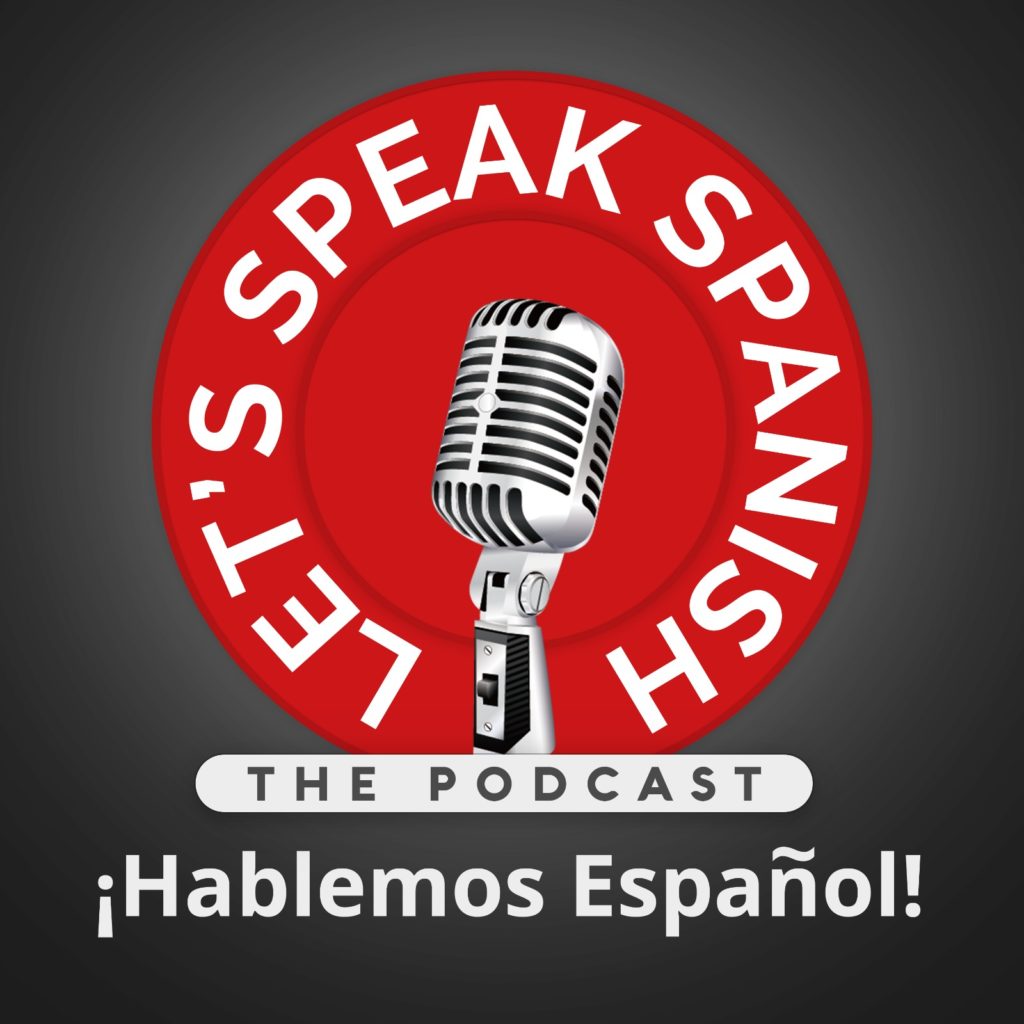
Listen to Our Podcast: Directions in Spanish
Now it’s your time to practice.
Try to use the vocabulary and phrases you have learned today in the examples below to practice their use! That way, you’ll remember them quicker, you’ll feel more confident using them, and it’ll be more likely to understand them in a real-life situation.
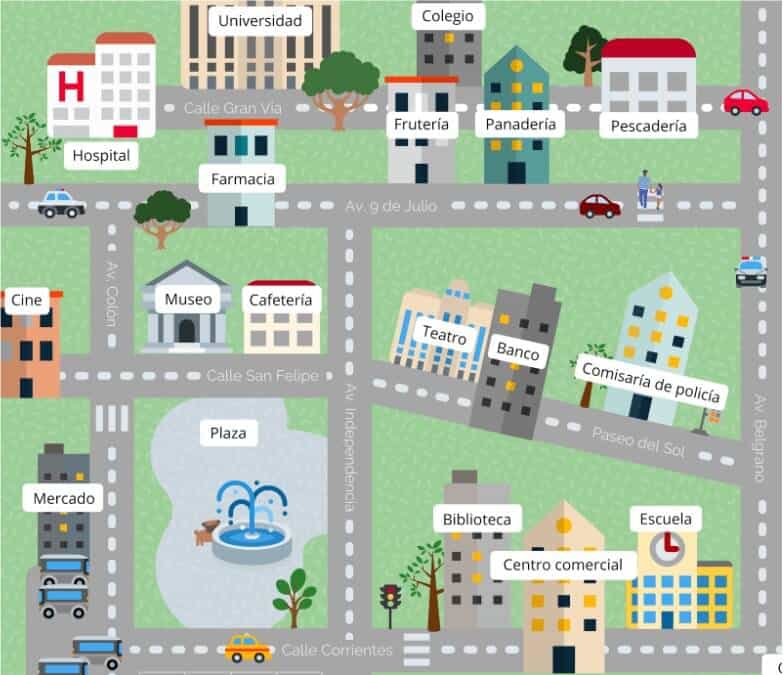
Would you like to take your Spanish to the next level?
Whether you’re a complete beginner or you’re an advanced student, with us you’ll reach the next level of Spanish quickly and easily. With 24 Levels to Spanish fluency, the next level is always close by, so you will never lose motivation.
You can choose between:
COMBI Spanish Self-Study Course
Live lesson with one of our tutors.
In both cases, you’ll learn Spanish using our successful 24 Level System to Spanish Fluency® and our unique Spanish teaching methods.
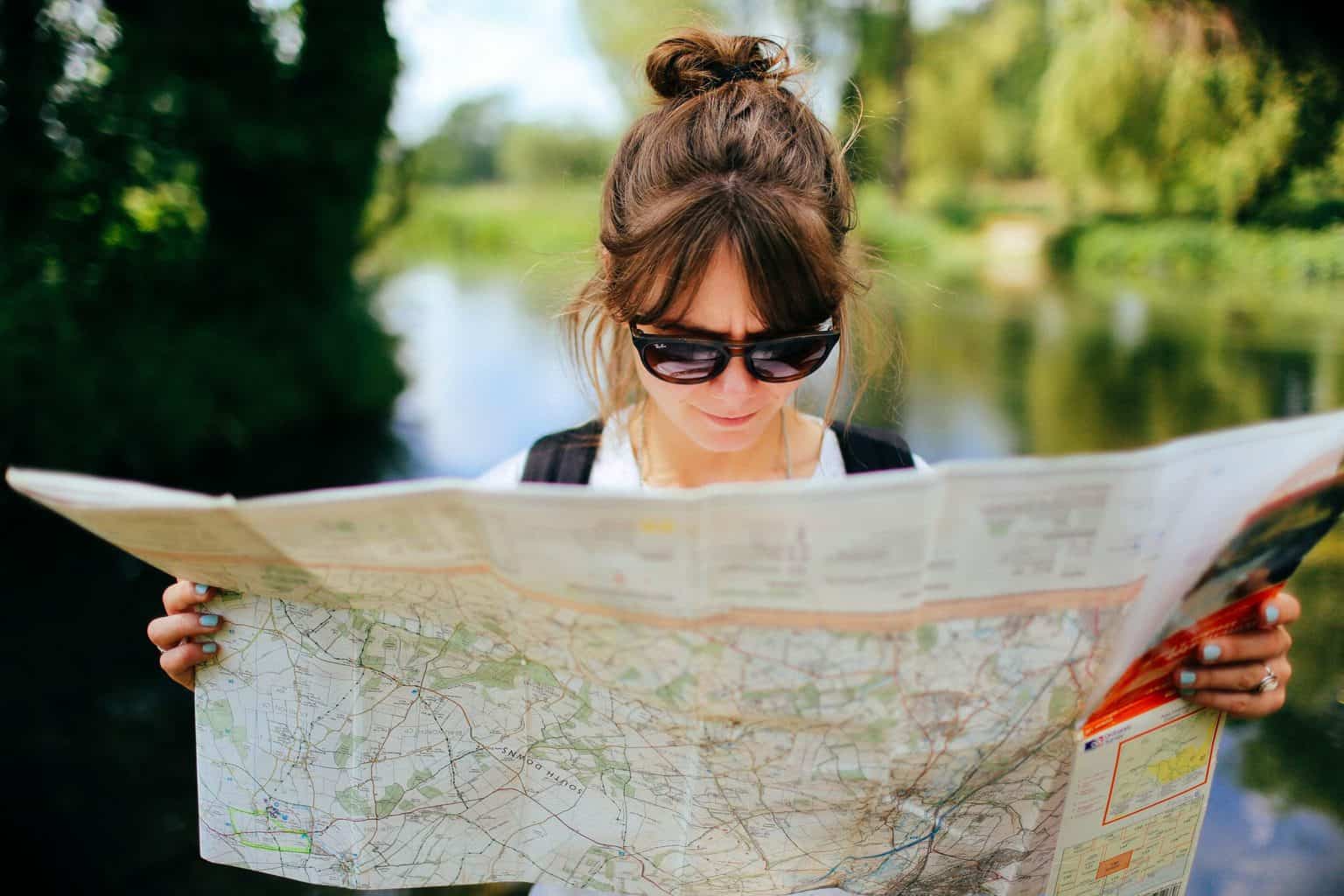
[email protected]
- 24 Level System to Spanish Fluency®
- Pricing & Booking
- Spanish Test
- COMBI Course

© 2024 FU International Academy
- Privacy Policy
- Terms and Conditions
- Legal Notice
Illustration by Natasha Remarchuk de Icons8

- Conversational Spanish
- Level 2-24 Courses
- Email Mini Courses
- Wall of Love
- More Networks

A Useful Guide to Spanish Travel Phrases

Written by Diana Luciana
August 25, 2022.
Are you planning a long-awaited trip to a Spanish-speaking country? 🌎
Your trip can be so much more fun and meaningful if you know how to say travel in Spanish, and communicate with the locals—how many times have you missed out on a secret spot because you didn’t speak the language?—and find your way around with this guide to Spanish travel phrases and words. From getting to the airport to ordering food in Spanish at the restaurant, we got you covered.
How do you say travel in Spanish?
We put together a list of essential Spanish travel phrases, need-to-know vocabulary, and tips for traveling in Spanish. Keep in mind that you don’t need to speak Spanish fluently to get the most out of your trip and have meaningful interactions. A basic travel Spanish vocabulary will get you a long way, and the locals would definitely appreciate the effort. And when you don’t understand or aren’t sure of what’s being said, simply ask ¿Habla inglés? (Do you speak English?)
Key phrases in Spanish for travelers
Here are some key Spanish phrases and greetings you should know. You can use them in any situation (asking for directions in Spanish, asking questions in Spanish, meeting new people in Spanish, and so on.) It’s a mini Spanish 101 lesson:
Spanish greetings
- Buenos días — Good morning
- Buenas tardes — Good afternoon
- Buenas noches — Good evening
- ¿Cómo te llamas? — What’s your name?
- Me llamo… — My name is…
- Mucho gusto. Encantado — It’s a pleasure to meet you.
- ¿Cómo te va? / ¿Qué tal? / ¿Qué hay? — How’s it going?
- ¿Cómo estás? — How are you?
- Bien, gracias / Muy bien, gracia s — Good, thank you / Very well, thank you
- Por favor — Please
- Perdón / Lo siento — Sorry
- ¿Habla inglés? — Do you speak English?
- No hablo español. — I don’t speak Spanish.
- No entiendo bien el español. — I don’t understand Spanish well.
- ¿Tiene…? — Do you have…?
- ¿Entiende? — Do you understand?
- Yo entiendo / yo no entiendo — I understand / I don’t understand
- Hágame el favor de hablar más despacio. — Speak more slowly, please.
- Escríbalo, por favor. — Write it down, please.
Essential Spanish
- ¿Dónde está…? ¿Dónde están…? — Where is…? Where are…?
- ¿Por dónde se va a…? / ¿Cómo puedo llegar a…? — How do you go to…?
- ¿Dónde estamos aquí en el mapa? — Where are we on the map?
- ¿Está lejos? ¿Está por aquí? — Is it far away? Is it near here?
- Busco… — I’m looking for…
- ¿Me podría ayudar? — Can you help me?
- Estoy perdido (for men) / perdida (for women) . — I’m lost.
- ¿Hay alguien que hable inglés? — Is there anyone who speaks English?
- Disculpe / Con permiso / Perdóname — Excuse me
- ¿Quién? — Who?
- ¿Qué? — What?
- ¿Cuándo? — When?
- ¿Cómo? — How?
- ¿Cuánto? — How much?
- ¿Cuántos? — How many?
- ¿Por qué? — Why?
- ¿A qué hora? — What time?
- ¿Por cuánto tiempo? — How long?
- ¿Cada cuánto? — How often?
- Yo quiero / yo no quiero — I want / I don’t want
- Yo tengo / yo no tengo — I have / I don’t have
How to say airport in Spanish
Imagine yourself getting off the plane ( el avión )—new place, new language, new everything—ready to start your vacation. Even though English is widely spoken, knowing the basic Spanish travel vocabulary for airports and planes will make your trip easier. And you will start your vacation on the right foot, confident that you can find your way in any situation.
Essential travel vocabulary in Spanish for when you are at the airport ( el aeropuerto ):
Spanish travel vocabulary
Airport-specific vocabulary in Spanish
- la aduana — customs
- la aerolínea / la linea aerea — airline
- el asiento — seat
- el auxiliar de vuelo, la azafata — flight attendant
- el baño — bathroom
- el boleto — ticket
- confirmar una reservación — to confirm a reservation
- el destino — destination
- el equipaje — luggage
- el horario, el itinerario — schedule
- la maleta — suitcase
- el pasajero, la pasajera — passenger
- el pasaporte — passport
- el regreso — return
- la salida — departure, exit
- la tarifa — price
- la tienda libre de impuestos — duty-free shop
- el viaje — journey, trip
- el vuelo — flight, wing
Spanish travel phrases
Useful phrases at the airport in Spanish
- ¿Cuándo sale el avión? — When does the plane leave?
- Mi vuelo es a las … en punto. — My flight is at … o’clock.
- ¿A qué hora es el embarque? — What time is boarding?
- ¿Cuándo llega el avión? — When does the plane arrive?
- Quisiera cambiar mi reserva / asiento. — I would like to change my reservation / seat.
- Querría anular mi reserva. — I would like to cancel my reservation.
- Necesitamos ayuda para subir al avión. — We need help to get on the plane.
- ¿Podría elegir mi asiento? — Could I choose my seat?
- Este es mi equipaje de mano . — This is my carry-on luggage.
- ¿Se ha cancelado el vuelo? — Has the flight been canceled?
- ¿Dónde está la terminal internacional / a puerta de embarque ? — Where is the international terminal / boarding gate?
- ¿Dónde puedo cambiar dinero? — Where is there a currency exchange desk?
- ¿Dónde está el baño? — Where is the bathroom?
How to ask for directions in Spanish
You are finally in the city, ready to explore! Next on the list is learning how to ask for directions in Spanish. In this section, we’ll also cover the topic of transportation and finding a hotel in Spanish, and show you the most common travel phrases. Let’s delve into it:
- ¿Dónde está la estación de ferrocarril? — Where is the railway station?
- ¿A qué hora sale el tren? — What time does the train leave?
- ¿A qué hora sale el próximo tren? — What time does the next train leave?
- ¿De qué plataforma sale? — Which platform does it leave from?
- ¿Dónde puedo tomar un taxi / un autobús? (Latin America) / ¿Dónde puedo coger un taxi / un autobús? (Spain) — Where can I catch a taxi / a bus?
- ¿Tiene un pase de un día? — Do you have a one-day pass?
- ¿Cuánto cuesta un billete al aeropuerto? — How much is a ticket to the airport?
- ¿Cómo llego a…? — How do I get to … ?
- Gira a la izquierda/derecha. — Turn left/right.
- ¿Dónde hay un supermercado? — ¿Where is there a supermarket?
- ¿Dónde hay una casa de cambio? — Where is the currency exchange?
- ¿Dónde está el banco? — Where is the bank?
- ¡Disculpe! Soy turista y estoy perdido/a. — Excuse me! I am a tourist and I am lost.
- ¿Dónde hay un restaurante? — Where is a restaurant?
- Me podrías recomendar un restaurante? — Do you have any restaurant recommendations?
12 Spanish travel phrases for the hotel
- Busco un hotel . — I’m looking for a hotel.
- Yo necesito un hotel / un cuarto / un cuarto con baño. — I need a hotel / a room / a room with a bathroom.
- Una habitación para dos personas . — A room for two people.
- Yo tengo una reserva a nombre de… — I have a reservation under the name of…
- He reservado una habitación. — I have booked a room.
- ¿Puedes darme la llave de mi habitación? — Can you give me the key to my room?
- ¿Cuándo es la hora límite de salida? — When is check-out time?
- ¿Puedo solicitar una salida tardía? — Can I request for late check-out?
- ¿Cuál es la contraseña de Wifi? — What is the Wifi password?
- ¿Tiene servicio de habitaciones? — Do you have room service?
- ¿A qué hora es el desayuno? — What time is breakfast?
- Esta habitación es demasiado ruidosa. — This room is too noisy.
How to order food in Spanish
After a long day of walking and exploring, it’s time to take a break and have a bite. Maybe try out the local Spanish cuisine. Whether you are ordering food or drinks, these phrases will come in handy. And if you want to learn more about how to say food in Spanish, check out this post . (You also have an entire section about ordering food in Spanish.) Start with these phrases:
- Una mesa para… dos, tres, cuatro . — A table for… two, three, four.
- ¿Cuál es el menú de hoy? — What is today’s menu?
- Me gustaría probar la especialidad del cocinero. — I would like to try the chef’s specialty.
- ¿Qué me recomienda? — What do you recommend?
- Me gustaría algo de postre. — I would like some dessert.
- La cuenta, por favor. – The check, please.
- ¿Acepta tarjeta de crédito? — Do you accept credit card?
- Tengo alergia a … — I am allergic to…
- Soy alérgico. — I’m allergic.
- Soy vegetariano/a. — I’m a vegetarian.
Now you’re all set for your Spanish travels! I hope this guide will enhance your travel experience, and that you will enjoy speaking Spanish—from asking for directions to ordering breakfast at the local cafe. If you want more free Spanish lessons , check out my YouTube channel and blog .
What’s your favorite travel destination? ✈️🧳 Drop your answer in the comments.
P.S. Do you know how to say safe travels in Spanish? Learn 3 ways you can say safe travels in Spanish: Te deseo que tengas un buen viaje (I wish you safe travels), Ojalá que tengas un buen viaje (I hope you have a good trip) and the formal option of Le deseo que tenga un buen viaje (I hope you have a good trip.) Now you know how to say safe travels in Spanish.
- Click to share on Facebook (Opens in new window)
- Click to share on Twitter (Opens in new window)
- Click to share on LinkedIn (Opens in new window)
- Click to share on Telegram (Opens in new window)
- Click to share on WhatsApp (Opens in new window)
- Click to share on Pinterest (Opens in new window)
- Click to share on Pocket (Opens in new window)
- Click to print (Opens in new window)
- Click to email a link to a friend (Opens in new window)
You May Also Like…

Let’s talk about the weather in Spanish
Dec 12, 2023
Work on your language skills and learn how to talk about the weather in Spanish. Whether it’s small talk or striking up a new conversation, these Spanish dialogues will help you improve your Spanish.

What’s the difference between “un” and “uno” in Spanish?
Dec 5, 2023
Do you know what’s the difference between un and uno in Spanish? Let’s work together on your Spanish skills with these dialogues!

Do You Know How to Use “Me Gusta” in Spanish?
Nov 16, 2023
Do you know how to use “me gusta” in Spanish? Test your Spanish with these conversations and learn how to say “I like” in Spanish.
Get free Spanish lessons!
Join the mailing list for updates, special offers, and a $1 conversation class!
You have Successfully Subscribed!
Top 50 Spanish Phrases for Tourism and Travel
Discover the top 50 spanish phrases for tourism and travel. learn essential spanish expressions for your next trip. useful phrases for tourists in spanish., introduction.
Planning a trip to a Spanish-speaking country? Familiarizing yourself with some essential Spanish phrases can greatly enhance your travel experience. In this article, we have compiled the top 50 Spanish phrases for tourism and travel that will help you communicate effectively and navigate various situations during your trip.
- 1. Hello/Hi - Hola
- 2. Good morning - Buenos días
- 3. Good afternoon - Buenas tardes
- 4. Good evening - Buenas noches
- 5. Please - Por favor
- 6. Thank you - Gracias
- 7. You're welcome - De nada
- 8. Excuse me - Disculpe
- 9. I'm sorry - Lo siento
- 10. Yes - Sí
- 11. No - No
- 12. I don't understand - No entiendo
- 13. Do you speak English? - ¿Hablas inglés?
- 14. Could you help me, please? - ¿Podrías ayudarme, por favor?
- 15. Where is...? - ¿Dónde está...?
- 16. How much does it cost? - ¿Cuánto cuesta?
- 17. Can you recommend a good restaurant? - ¿Puedes recomendar un buen restaurante?
- 18. I would like... - Me gustaría...
- 19. Can I have the bill, please? - ¿Me puedes traer la cuenta, por favor?
- 20. I need a taxi - Necesito un taxi
- 21. Where is the bathroom? - ¿Dónde está el baño?
- 22. I'm lost - Estoy perdido/a
- 23. Is there a pharmacy nearby? - ¿Hay una farmacia cerca?
- 24. Can you show me on the map? - ¿Puedes mostrarme en el mapa?
- 25. What time is it? - ¿Qué hora es?
- 26. How do I get to...? - ¿Cómo llego a...?
- 27. Can I use your Wi-Fi? - ¿Puedo usar tu Wi-Fi?
- 28. Is it safe here? - ¿Es seguro aquí?
- 29. Can I try this on? - ¿Puedo probármelo?
- 30. Can you take a picture of me, please? - ¿Puedes tomarme una foto, por favor?
- 31. I'm allergic to... - Soy alérgico/a a...
- 32. Where can I buy tickets? - ¿Dónde puedo comprar boletos?
- 33. Do you accept credit cards? - ¿Aceptan tarjetas de crédito?
- 34. Is there a bank nearby? - ¿Hay un banco cerca?
- 35. Can you recommend a good hotel? - ¿Puedes recomendar un buen hotel?
- 36. What's the weather like today? - ¿Cómo está el clima hoy?
- 37. Can you speak slower, please? - ¿Puedes hablar más despacio, por favor?
- 38. What is your name? - ¿Cómo te llamas?
- 39. Nice to meet you - Mucho gusto
- 40. Where are you from? - ¿De dónde eres?
- 41. I love this place - Me encanta este lugar
- 42. Can you help me with my bags? - ¿Puedes ayudarme con mis maletas?
- 43. Is there a tourist information center nearby? - ¿Hay un centro de información turística cerca?
- 44. Can you recommend any local attractions? - ¿Puedes recomendar alguna atracción local?
- 45. Is this seat taken? - ¿Está ocupado este asiento?
- 46. Can you call a taxi for me? - ¿Puedes llamar un taxi para mí?
- 47. Can you repeat that, please? - ¿Puedes repetir eso, por favor?
- 48. Can I have a menu, please? - ¿Puedo tener un menú, por favor?
- 49. What's your recommendation? - ¿Cuál es tu recomendación?
- 50. Have a nice day! - ¡Que tengas un buen día!
Learning a few key phrases in Spanish can make your travel experience more enjoyable and rewarding. With these top 50 Spanish phrases for tourism and travel, you'll be able to communicate effectively, ask for assistance, and engage with locals during your journey. Start practicing these phrases and embrace the rich culture and language of your destination!

Discover a better way to learn Spanish online.
Regular conversation practice is the key to fluency. There's no better way to build confidence, develop comprehension skills and an authentic accent. It's fun, effective and guaranteed to get you talking.
Start for free today. We've helped thousands of students learn a new language online and we can help you too.

Ayami Hamakawa
Radu Titirca

David Askill
John Barton

Sharyn Doherty
Daniel Moore
Get Started Today Bring Learning Spanish to Life
Native teachers, great pricing, ultimate flexibility.
Sign up and take a free trial lesson with no obligation. No credit card required.
SPANISH TOPICS
Success stories, learning spanish.
Get a free trial lesson with a native speaking online Spanish tutor today.
You are using an outdated browser. Please upgrade your browser or activate Google Chrome Frame to improve your experience.
71 Spanish Vacation Vocabulary to Aid Your Travels (Pronunciation Included)
So you’ve decided to travel to a Spanish-speaking country .
Your luggage is ready, your passport is up-to-date, your trip has been booked…
But what about your Spanish vocabulary ? Are you ready to have your first real-life conversation in Spanish ?
Whether you’re going to spend the next few weeks on the beach, in the mountains or even underground , you’ll find the words you need here.
Spanish Vacation Nouns
- 1. el recuerdo (the souvenir)
- 2. el regalo (the present, the gift)
3. el billete de ida y vuelta (the round-trip ticket)
- 4. la maleta (the suitcase, the bag)
- 5. el pasaporte (the passport)
6. el DNI (ID card)
- 7. el turista (the tourist, the vacationer)
- 8. el paisaje (the landscape)
- 9. el avión (the plane)
- 10. el coche (the car)
- 11. la gasolina (the gasoline, the fuel)
- 12. la gasolinera (the gas station)
- 13. las vistas (the view)
- 14. la playa (the beach)
- 15. el museo de… (the museum of…)
- 16. el cine (the movie theater)
- 17. la piscina (the swimming pool)
- 18. el mar (the sea)
- 19. el concierto (the concert)
20. las gafas de sol (the sunglasses)
- 21. la cámara de fotos (the photo camera)
22. la videocámara (the video camera)
23. las sandalias / las chanclas (the flip-flops, the sandals).
- 24. la agencia de viajes (the travel agency)
- 25. las llaves (the keys)
- 26. el helado (the ice cream)
- 27. la heladería (the ice cream parlor)
- 28. la tumbona (the lounger)
- 29. la terraza (the terrace)
- 30. el flotador (the float, the rubber ring)
- 31. la Oficina de Turismo (the Tourist Information Office)
- 32. la farmacia (the drugstore, the pharmacy)
33. la tarjeta de crédito / la tarjeta de débito (the credit/debit card)
- 34. el cajero automático (the ATM machine)
- 35. la avería (the breakdown)
36. el carné / el permiso de conducir (the driver’s license)
37. la queja / la reclamación (the complaint).
- 38. la sombrilla (the shade, the umbrella)
- 39. la escala (the stopover)
- 40. el auxiliar de vuelo (the flight attendant)
- 41. la tripulación (the crew)
42. la habitación individual / la habitación doble (the single/double/twin room)
- 43. el secador de pelo (the hairdryer)
- 44. la atracción turística (the tourist attraction)
- 45. la ciudad (the city)
46. el casco antiguo (the old town, the historic center)
Spanish vacation verbs, 47. viajar , ir de viaje , hacer un viaje (to travel, to go on a trip).
- 48. ir de vacaciones (to go on vacation)
- 49. pasar las vacaciones (to vacation)
- 50. estar de vacaciones (to be on vacation)
51. hacer fotos / tomar fotos / sacar fotos (to take pictures)
- 52. montar a caballo (to go horseback riding, to ride a horse)
53. hacer una excursión , ir de excursión (to go for a ramble/a hike)
54. hacer una reserva , reservar (to make a reservation, to book).
- 55. confirmar una reserva (to confirm a reservation/booking)
- 56. ir de camping (to go camping)
- 57. hacer las maletas (to pack, to pack your luggage)
- 58. visitar (to visit, to tour, to see, to go, to pay a visit)
- 59. tomar un taxi (to take a taxi)
- 60. quedarse (to stay, like at a hotel)
- 61. descansar (to rest, to relax)
- 62. alquilar (to rent)
- 63. hacer un castillo de arena (to build a sandcastle)
- 64. leer un libro (to read a book)
65. divertirse , disfrutar , pasárselo bien (to have fun, to have a blast, to enjoy oneself)
- 66. ir de compras (to go shopping)
- 67. hacer turismo (to sightsee)
- 68. ver los lugares de interés (to visit places of interest)
- 69. dar un paseo (to go for a walk)
- 70. hacer una barbacoa (to barbecue)
- 71. hacer un picnic (to have a picnic)
Download: This blog post is available as a convenient and portable PDF that you can take anywhere. Click here to get a copy. (Download)
1. el recuerdo (the souvenir)
Recuerdo comes from the verb recordar , which means to remember. That is why a memory is also called a recuerdo in Spanish!
2. el regalo (the present, the gift)
They say “the present is a gift.” In Spanish, this can be said el presente es un regalo or even el presente es un presente .
You can buy the whole round-trip ticket, or un billete de ida (a one-way ticket) and un billete de vuelta (a return ticket).
Bear in mind that billete is used in Spain, while Latin American countries will typically use boleto or pasaje , depending on the country.
4. la maleta (the suitcase, the bag)
I think this is one of those funny words every language has.
If you use it in the singular, it is translated as “suitcase.” Each individual bag you have is a maleta .
However, if you use it in the plural, you can translate it as “luggage” or “baggage.” You do not have to count how many suitcases you have (unless you want to). You can just refer to all of them as a whole:
Dame esa maleta . (Give me that suitcase.)
¿Están listas tus maletas ? (Is your luggage ready?)
5. el pasaporte (the passport)
Never forget your passport or ID when leaving home, let alone when leaving your country!
DNI means Documento Nacional de Identidad (National Identity Document). I know you probably do not have one (yet), but if you are traveling to, say, Spain, do not expect people to say ID. For us, any ID is a DNI (deh-eneh-ih), and that is how we will say it to you.
Many European people have passports, but now you are able to travel throughout the whole European Union ( viajar por toda la Unión Europea ) by using just your European ID .
However, if you come from America, you will need a passport or a visa ( un visado in Castilian Spanish, also referred to as una visa in some Latin American countries) .
A typical sentence you will hear when checking in is:
DNI o pasaporte, por favor. (ID card or passport, please.)
This may sound rude to you, but it is not. Despite being in the form of an order, it is rather a shorter way of asking:
¿Puede mostrarme su DNI o su pasaporte, por favor? (Could you show me your ID card or passport, please?)
7. el turista (the tourist, the vacationer)
This Spanish word is very similar to its English counterpart , so it should not be problematic at all.
Just remember that nouns ending in -ista do not have a specific feminine form. Male and female tourists are both called turistas . You just change the determiners and any other accompanying word:
el turista / la turista , los turistas / las turistas (the tourist, the tourists)
este turista / esta turista , estos turistas / estas turistas (this tourist, these tourists)
un turista español / una turista española , unos turistas españoles / unas turistas españolas (a Spanish tourist, some Spanish tourists)
8. el paisaje (the landscape)
9. el avión (the plane), 10. el coche (the car).
For more information about the word “car” and its different translations into Spanish, such as carro and auto , take a moment to learn your Spanish transportation terms .
11. la gasolina (the gasoline, the fuel)
Gasolina is a word normally used to refer to any kind of fuel for your car in general. However, we also use it to specifically refer to gasoline.
If your car uses diesel, do not use gasolina! Choose the gasóleo or gasoil dispenser.
12. la gasolinera (the gas station)
Since gasolina is used to refer to fuel in general, you fill your tank at the gasolinera .
13. las vistas (the view)
You can use this word in its plural form if you are talking about landscapes. The singular form la vista normally refers to our sight, although you can use it to talk about the view too:
La vista desde esta ventana es muy bonita. (The view from this window is very pretty.)
14. la playa (the beach)
What can I say? Let’s go to the playa !
15. el museo de… (the museum of…)
You can always find a museum that appeals to you. Always! Some of my favorites are:
El museo de Ciencias (The Science Museum)
El museo de Etnología (The Museum of Ethnology)
El museo de Arte Moderno (The Museum of Modern Art)
16. el cine (the movie theater)
17. la piscina (the swimming pool).
For people like me who love traveling during the winter, I recommend visiting a piscina cubierta (an indoor pool).
Note that it’s also common to hear the word alberca used to say “swimming pool” in Mexico and some Central American countries.
18. el mar (the sea)
19. el concierto (the concert).
If you travel to Barcelona, do not miss the conciertos al aire libre (open-air concerts). They are simply great!
Note that you may also hear the term lentes used to refer to sunglasses (and also eyeglasses) in some countries in Latin America.
21. la cámara de fotos (the photo camera)
Let’s be honest, many people these days do not use photo or video cameras anymore. We use our cell phones to record our memories now, but you can still learn what these words mean.
24. la agencia de viajes (the travel agency)
25. las llaves (the keys).
It does not matter if we are talking about your house keys ( las llaves de tu casa ), the keys of the apartment you have booked ( las llaves del apartamento que has alquilado ) or the hotel key card ( la tarjeta llave del hotel ), just do not lose any of them, please!
26. el helado (the ice cream)
27. la heladería (the ice cream parlor), 28. la tumbona (the lounger).
This is the kind of lounger you would use by the pool, on the beach, in your garden, etc. Tumbona comes from the verb tumbarse , which means to lie down.
29. la terraza (the terrace)
30. el flotador (the float, the rubber ring).
What about manguitos (arm floats)? Do you think you will need them?
31. la Oficina de Turismo ( the Tourist Information Office )
32. la farmacia (the drugstore, the pharmacy).
Depending on where you are traveling to, you may also hear people call the drugstore la botica .
34. el cajero automático (the ATM machine)
Remember to always print or ask for your comprobante (receipt, slip) when using an ATM machine!
35. la avería (the breakdown)
Avería comes from averiarse (to break down). I hope you do not have problems with your car, but just in case, remember the following:
Mi coche se ha averiado . (My car has broken down.)
Necesito una grúa. (I need a tow truck.)
Disculpe, mi coche se ha averiado. ¿Puede llamar a una grúa, por favor? (Excuse me, my car has broken down. Could you please call a tow truck?)
There is no difference in Spanish between these two terms. Both refer to the document you should keep with you at all times while driving!
Presentar una reclamación means “to file a complaint”—but let’s hope there is no need for this!
38. la sombrilla (the shade, the umbrella)
Sombrilla literally means “little shadow.”
39. la escala (the stopover)
Here is how you would use this one:
Hago escala en Buenos Aires. (I’m stopping over in Buenos Aires.)
40. el auxiliar de vuelo (the flight attendant)
41. la tripulación (the crew).
You can also choose the type of bed you want:
la cama individual (the single bed)
la cama de matrimonio / la cama doble (the double/queen bed)
43. el secador de pelo (the hairdryer)
You can ask at your hotel:
¿Hay secador de pelo en el cuarto de baño? (Is there a hairdryer in the bathroom?)
44. la atracción turística (the tourist attraction)
45. la ciudad (the city).
Remember that many cities do not allow cars into their historic centers. Look for any Calle Peatonal (Pedestrian Street) sign, just in case!
These three verbs mean exactly the same, but bear in mind their construction is very different:
Voy a viajar a Madrid. (I am going to travel/go on a trip to Madrid.)
Voy a ir de viaje a Madrid. (I am going to travel/go on a trip to Madrid.)
Voy a hacer un viaje a Madrid. (I am going to travel/go on a trip to Madrid.)
48. ir de vacaciones (to go on vacation)
49. pasar las vacaciones (to vacation), 50. estar de vacaciones (to be on vacation).
I know these three last verbs are pretty similar, but they are used in different contexts, just like in English:
Voy a ir de vacaciones a Perú. (I’m going to go on vacation to Peru.)
Estoy pasando las vacaciones en Perú. (I am vacationing in Peru.)
Estoy de vacaciones en Perú. (I am on vacation in Peru.)
Remember that in some places you are not allowed to use the flash ( no puedes usar el flash ).
52. montar a caballo (to go horseback riding, to ride a horse)
You can use these two verbs interchangeably, but you had better remember that depending on the one you use, you might have to use a preposition . Besides that, the sentence construction looks a little different.
Have a look:
He hecho una reserva de hotel para dos personas. (I have made a hotel reservation for two people.)
He reservado un hotel para dos personas. (I have made a hotel reservation for two people.)
55. confirmar una reserva (to confirm a reservation/booking)
I highly recommend ( te recomiendo encarecidamente ) that you confirm all your bookings before starting your trip.
You would not want to arrive in a foreign country and realize you have no place to sleep ( no tienes un lugar donde dormir )!
56. ir de camping (to go camping)
Oh, look! An English word! Yes, we have more and more English words in Spanish !
However, if you want to be super Spanish when in a Spanish-speaking country, say acampar (to go camping) instead of ir de camping .
They both mean exactly the same, but I am sure people will be quite impressed with your Spanish skills!
57. hacer las maletas (to pack, to pack your luggage)
We “do” the suitcases in Spanish, because… why not?
58. visitar (to visit, to tour, to see, to go, to pay a visit)
Visitar is one of those verbs which, depending on the object, will or will not need the personal a . Remember the rule: if the object is alive, you need the personal a:
Me gusta visitar museos. (I like going to museums.)
Ayer visité a mi hermana. (I visited my sister yesterday.)
59. tomar un taxi (to take a taxi)
60. quedarse (to stay, like at a hotel).
Watch out when using this verb, because it has different forms with very different meanings. Here you have some of them:
Quedarse (to stay at a place):
Nos quedamos en un hotel. (We stayed at a hotel.)
Quedar + noun or time (to remain, to be left):
No quedan cervezas. (There are no beers left.)
Quedan dos minutos. (There are two minutes left.)
Quedar (to arrange to meet):
Quedamos a las cinco. (We arranged to meet at five.)
Quedar bien a alguien / Quedar mal a alguien. (to look good on somebody/to look bad on somebody):
Esta camisa no me queda bien . (This shirt doesn’t look good on me.)
61. descansar (to rest, to relax)
62. alquilar (to rent).
More and more tourists are deciding to rent an apartment ( alquilar un apartamento ) for vacation rather than stay at a hotel.
It allows them to save money ( ahorrar dinero ) and they get much more freedom to do what they want, when they want ( hacer lo que quieran cuando quieran ) .
Note that you may also hear the verbs arrendar or rentar used in some Latin American countries to say “to rent.”
63. hacer un castillo de arena (to build a sandcastle)
64. leer un libro (to read a book).
You can use these three verbs interchangeably, but remember that pasárselo bien is a reflexive verb and has the object pronoun lo (or la in Latin American Spanish: pasárse la bien ).
Bear this in mind when you conjugate it:
Note that vosotros is not used in Latin American Spanish. You should use ustedes instead.

66. ir de compras (to go shopping)
67. hacer turismo (to sightsee).
In Spanish, we say “to make tourism,” which may sound quite weird but it is not that crazy when you think about it!
68. ver los lugares de interés (to visit places of interest)
This verb is equivalent to visitar las atracciones turísticas (to visit the tourist attractions).
69. dar un paseo (to go for a walk)
70. hacer una barbacoa (to barbecue), 71. hacer un picnic (to have a picnic).
And while having a picnic, we say goodbye to this post.
Don’t feel overwhelmed by the amount of new words here. You don’t need to learn them all at once. Commit to learning five or ten per day and you’ll have them learned in no time! And to make sure the new words stick, try learning in context instead of simply rote learning them all.
One resource which combines memory techniques with in-context learning is the app and website FluentU , where you can reinforce vacation words by creating your own multimedia flashcards.
I hope you have enjoyed this trip to “Spanish vacation vocabulary” station.
See you next time!
Enter your e-mail address to get your free PDF!
We hate SPAM and promise to keep your email address safe

- Skip to primary navigation
- Skip to main content
- Skip to primary sidebar
- Skip to footer
StoryLearning
Learn A Language Through Stories
67 Essential Spanish Travel Phrases Every Traveller Needs To Know
Spain. Mexico. Argentina. Peru. Colombia.
If you're learning Spanish , the mere the mention of these countries can leave you daydreaming about your next trip abroad.
And although there are many incredible things to do and see in Spanish-speaking countries, what really makes these places special are the local people.
So before you pack your bags and jump on a plane, why not learn a little Spanish to help you make the most of your trip?
In this post, you’ll learn 67 Spanish phrases for travel that can help you survive in the language during your trip abroad. And who knows, they might even help you make a few new friends too!
To make it easier for you, I’ve divided the phrases up into different categories:
Table of Contents
Take the time to learn a few of these key Spanish travel phrases and you’ll be able to mix with the locals, get by in various situations and have a much more enjoyable and authentic experience during your trip.
By the way, if you want to learn Spanish in time for your trip, my top recommendation for language learners is my Uncovered courses, which teach you through StoryLearning®. Click here to find out more and try out the method for free.
Press play on the video below to learn Spanish travel phrases thanks to a story. Otherwise, keep scrolling to discover all 67 Spanish travel words and expressions.
First Things First: Greetings To Use On Arrival
Knowing how to greet people is the most basic thing you can learn in a foreign language. And yet its importance shouldn't be underestimated.
Even if you aren’t fluent enough to hold a long conversation, a simple ¡Hola! ¿Qué tal? (Hello, how are you?) can make all the difference.
You'll be able to use these expressions as soon as you arrive at your destination, whether it's at the airport, the train or bus station, or the hotel.
People appreciate it if you make an effort to speak their language when you visit their country, even if it’s only a few words.
Spanish-speaking countries are especially polite and greeting people correctly will go a long way towards endearing you to the locals, be they friends, people you meet in shops or on the street.
- ( BWAY-nos DEE-as)
- (BWAY-nas TAR-des)
- (BWAY-nas NOH-chays)
- (KOH-moh eh-STAH)
- (KOH-moh eh-STAHS)
- (bee-EN GRA-thee-as [Spain] / GRA-see-as [Latin America])
- (KOH-moh te YA-mas?)
- (May YA-moh… )
- (MOO-choh GOO-stoh)
And of course, let’s not forget common courtesy!
- (por fa-BOR)
- (GRA-thee-as [Spain] / GRA-see-as [Latin America])
If you get stuck in your Spanish conversation, you can always fall back on these next two phrases to get you out of trouble.
- (yo no en-tee-EN-doh)
- (Ab-la in-GLAYS)
Get What You Want On Your Trip With The Verb Querer
Once you’ve finished greeting someone, you’ll need to be able to move on to the crux of your conversation and to do that you’ll need to learn a couple of common verbs.
There are hundreds of Spanish verbs to learn and, to make your life more difficult, these verbs conjugate (change form).
This means learning a verb is never as simple as learning one word; you have to learn multiple different forms.
Having said that, you might be surprised by how far you can get only knowing one simple verb: I want .
It may not make you the most sophisticated Spanish speaker but 9 times out of 10 it will get you what you, well, want .
The verb in question is querer (to want) and in the first person form, it becomes quiero (I want).
Let’s take a look at how you can use it:
- (yo kee-EH-ro oon me-NOO)
- (YO kee-EH-ro oon taxi)
- (yo kee-EH-ro OO-na ser-BAY-za)
If you’d like to be a bit more polite (which is usually a good idea), you can also use:
- (kee-see-EH-ra…)
Asking For & Understanding Directions On Your Trip
Whether you’re looking for the toilet in a restaurant or trying to find a hotel to stay at, you’ll inevitably need to ask for directions at some point during your trip.
The simplest way to ask where something is, is to use ¿Dónde está? followed by the noun you are looking for:
- (DON-day es-TAH el BAH-nyo?)
- (DON-day es-TAH el BAN-koh?)
- (DON-day es-TAH la KA-yay de al-cal-AH?)
When travelling in a foreign country, if you're asking someone on the street for directions, don’t forget your manners! To get someone’s attention, start by saying:
- (Dis-KUL-pay)
- (Con per-MEE-soh / Per-DOH-nah-may)
- (eh- stoy per-DEE-doh)
Asking for directions is one thing but it’s pretty pointless if you don’t know how to understand the directions that are given to you!
Memorise these phrases to help you understand what the friendly locals are trying to tell you when you ask for their help:
- (A la de-RE-cha)
- (A la iz-kee-ER-da)
- (De-RE-cho)
- (En la es-KEE-nah)
- (a OO-na KWAD-rah)
Getting Around Spanish-Speaking Countries
If you’re not keen on walking everywhere, you'll need to be able to find out about local transport options to find your way around wherever you are.
Here are a few simple phrases you can use to locate a bus, train or taxi and get to wherever you need to go:
- (DON-day PWAY-doh en-kon-TRAR oon taxi?)
- (DON-day eh-STAH la pa-RAH-dah de ow-to-BOOS mas ser-KA-nah?)
- (DON-day eh-STAH la es-tah-see-ON de ferro-carr-EEL mas ser-KA-nah?)
- (KWAN-to KWES-ta oon bee-YET-ay PA-ra …)
- (oon bee-YET-ay PA-ra … por fa-BOR)
At A Restaurant On Your Travels
Each Spanish-speaking country has its own unique flavours and cuisine for you to try when you travel!
Food is definitely one of the big attractions to cities like San Sebastian in Spain and Buenos Aires in Argentina , so you'll need to make sure you have a basic grasp of food vocabulary ahead of your journey!
To start with, you need to be prepared to hear and understand certain questions in restaurants, such as:
- (kee-EH-res AL-go PA-ra koh-MER?)
- (kee-EH-res AL-go PA-ra beh-BER?)
- (KAY kee-EH-res koh-MER?)
When you read the menu, you'll see the available food grouped into different categories, just like in an English menu:
- (oo-na en-TRA-da)
- (oon PLA-toh prin-si-PAL)
- (oon POS-tray)
- (OO-na beh-BEE-da)
When you're ready to order, use either quiero (I want) or quisiera (I would like) with the items on the menu to tell the waiter what you'd like. For example, quiero…
- (OO-na SOH-pah)
- (OO-na en-sa-LA-da)
- (el POY-oh)
- (la CAR-nay)
- (oon AG-wa)
- (oon BEE-noh TIN-toh / BLAN-koh)
- (OO-na ser-BAY-sa)
- (oon ka-FAY)
So, for example, to order that ice-cold beer you're looking forward to at the end of a long day, you'd say quiero una cerveza.
If you're not sure what to try, you can always ask your waiter for a recommendation:
- (kay may re-kom-ee-EN-dah?)
In most restaurants in Spanish-speaking countries, the staff will be more than happy to suggest a particularly tasty local dish for you to try.
If you're a vegetarian or you have dietary complications, these next two phrases are essential:
- (soy be-he-tah-ree-AH-noh/nah)
- (TEN-go al-ER-hee-ah a las noo-EH-ses)
Finally, let's learn a couple of quick phrases you can use to ask about prices and pay the bill.
- (KWAN-to KWES-ta? )
- (la KWEN-ta por fa-BOR)
Key Spanish Question Words For Your Trip
Over the course of your journey, you'll almost certainly find yourself asking lots and lots of questions.
You might not have a huge Spanish vocabulary to draw on, but if you know the basic question words, you'll be able to get by in almost any common situation you might find yourself in.
Here are some key Spanish question words you need to know:
- (KWAN-doh?)
- (A kay AW-ra?)
- (KWAN-toh?)
- (KWAN-tohs)
- (kah-dah KWAN-toh?)
- (por KWAN-toh tee-EM-poh)
Once you’ve got these question words in your memory bank you’ll start noticing the patterns in Spanish grammar which will help you to move away from the basic Spanish phrases every tourist is using.
As you learn new words on your trip, you'll be able to combine them with these question words to start forming your own sentences and questions!
Get Ready For Adventure With These Spanish Travel Phrases!
Take the time to memorise these key Spanish travel phrases and you'll have everything you need to get the most out of your journey.
With just a few words of Spanish, I'm sure you'll meet lots of amazing people and have plenty of life-changing experiences along the way.
Who knows, perhaps spending some time visiting a Spanish-speaking country will motivate you to strive for fluency?
If this article has inspired you to both travel and to learn Spanish, then I've got something to get you started on your Spanish learning journey.
I'm a big believer in the power of story to enable you to learn a language. That's why I've created an entire beginner course dedicated to learning Spanish by immersing yourself in an engaging story.
It's my Spanish Uncovered course, and it's designed to take you from beginner to B1 Intermediate level.
Click here for more information on the course, test it out for free and to find out how it'll help you.
Language Courses
- Language Blog
- Testimonials
- Meet Our Team
- Media & Press
Download this article as a FREE PDF ?
What is your current level in Swedish?
Perfect! You’ve now got access to my most effective [level] Swedish tips…
Where shall I send the tips and your PDF?
We will protect your data in accordance with our data policy.
What is your current level in Danish?
Perfect! You’ve now got access to my most effective [level] Danish tips…
NOT INTERESTED?
What can we do better? If I could make something to help you right now, w hat would it be?
Which language are you learning?
What is your current level in [language] ?
Perfect! You’ve now got access to my most effective [level] [language] tips, PLUS your free StoryLearning Kit…
Where shall I send them?
Download this article as a FREE PDF?
Great! Where shall I send my best online teaching tips and your PDF?
Download this article as a FREE PDF ?
What is your current level in Arabic?
Perfect! You’ve now got access to my most effective [level] Arabic tips…
FREE StoryLearning Kit!
Join my email newsletter and get FREE access to your StoryLearning Kit — discover how to learn languages through the power of story!
Download a FREE Story in Japanese!
Enter your email address below to get a FREE short story in Japanese and start learning Japanese quickly and naturally with my StoryLearning® method!
What is your current level in Japanese?
Perfect! You’ve now got access to the Japanese StoryLearning® Pack …
Where shall I send your download link?
Download Your FREE Natural Japanese Grammar Pack
Enter your email address below to get free access to my Natural Japanese Grammar Pack and learn to internalise Japanese grammar quickly and naturally through stories.
Perfect! You’ve now got access to the Natural Japanese Grammar Pack …
What is your current level in Portuguese?
Perfect! You’ve now got access to the Natural Portuguese Grammar Pack …
What is your current level in German?
Perfect! You’ve now got access to the Natural German Grammar Pack …
Train as an Online Language Teacher and Earn from Home
The next cohort of my Certificate of Online Language Teaching will open soon. Join the waiting list, and we’ll notify you as soon as enrolment is open!
Perfect! You’ve now got access to my most effective [level] Portuguese tips…
What is your current level in Turkish?
Perfect! You’ve now got access to my most effective [level] Turkish tips…
What is your current level in French?
Perfect! You’ve now got access to the French Vocab Power Pack …
What is your current level in Italian?
Perfect! You’ve now got access to the Italian Vocab Power Pack …
Perfect! You’ve now got access to the German Vocab Power Pack …
Perfect! You’ve now got access to the Japanese Vocab Power Pack …
Download Your FREE Japanese Vocab Power Pack
Enter your email address below to get free access to my Japanese Vocab Power Pack and learn essential Japanese words and phrases quickly and naturally. (ALL levels!)
Download Your FREE German Vocab Power Pack

Enter your email address below to get free access to my German Vocab Power Pack and learn essential German words and phrases quickly and naturally. (ALL levels!)
Download Your FREE Italian Vocab Power Pack
Enter your email address below to get free access to my Italian Vocab Power Pack and learn essential Italian words and phrases quickly and naturally. (ALL levels!)
Download Your FREE French Vocab Power Pack
Enter your email address below to get free access to my French Vocab Power Pack and learn essential French words and phrases quickly and naturally. (ALL levels!)
Perfect! You’ve now got access to the Portuguese StoryLearning® Pack …
What is your current level in Russian?
Perfect! You’ve now got access to the Natural Russian Grammar Pack …
Perfect! You’ve now got access to the Russian StoryLearning® Pack …
Perfect! You’ve now got access to the Italian StoryLearning® Pack …
Perfect! You’ve now got access to the Natural Italian Grammar Pack …
Perfect! You’ve now got access to the French StoryLearning® Pack …
Perfect! You’ve now got access to the Natural French Grammar Pack …
What is your current level in Spanish?
Perfect! You’ve now got access to the Spanish Vocab Power Pack …
Perfect! You’ve now got access to the Natural Spanish Grammar Pack …
Perfect! You’ve now got access to the Spanish StoryLearning® Pack …
Where shall I send them?
What is your current level in Korean?
Perfect! You’ve now got access to my most effective [level] Korean tips…
Perfect! You’ve now got access to my most effective [level] Russian tips…
Perfect! You’ve now got access to my most effective [level] Japanese tips…
What is your current level in Chinese?
Perfect! You’ve now got access to my most effective [level] Chinese tips…
Perfect! You’ve now got access to my most effective [level] Spanish tips…
Perfect! You’ve now got access to my most effective [level] Italian tips…
Perfect! You’ve now got access to my most effective [level] French tips…
Perfect! You’ve now got access to my most effective [level] German tips…
Download Your FREE Natural Portuguese Grammar Pack
Enter your email address below to get free access to my Natural Portuguese Grammar Pack and learn to internalise Portuguese grammar quickly and naturally through stories.
Download Your FREE Natural Russian Grammar Pack
Enter your email address below to get free access to my Natural Russian Grammar Pack and learn to internalise Russian grammar quickly and naturally through stories.
Download Your FREE Natural German Grammar Pack
Enter your email address below to get free access to my Natural German Grammar Pack and learn to internalise German grammar quickly and naturally through stories.
Download Your FREE Natural French Grammar Pack
Enter your email address below to get free access to my Natural French Grammar Pack and learn to internalise French grammar quickly and naturally through stories.
Download Your FREE Natural Italian Grammar Pack
Enter your email address below to get free access to my Natural Italian Grammar Pack and learn to internalise Italian grammar quickly and naturally through stories.
Download a FREE Story in Portuguese!

Enter your email address below to get a FREE short story in Brazilian Portuguese and start learning Portuguese quickly and naturally with my StoryLearning® method!
Download a FREE Story in Russian!
Enter your email address below to get a FREE short story in Russian and start learning Russian quickly and naturally with my StoryLearning® method!
Download a FREE Story in German!
Enter your email address below to get a FREE short story in German and start learning German quickly and naturally with my StoryLearning® method!
Perfect! You’ve now got access to the German StoryLearning® Pack …
Download a FREE Story in Italian!
Enter your email address below to get a FREE short story in Italian and start learning Italian quickly and naturally with my StoryLearning® method!
Download a FREE Story in French!

Enter your email address below to get a FREE short story in French and start learning French quickly and naturally with my StoryLearning® method!
Download a FREE Story in Spanish!
Enter your email address below to get a FREE short story in Spanish and start learning Spanish quickly and naturally with my StoryLearning® method!
FREE Download:
The rules of language learning.

Enter your email address below to get free access to my Rules of Language Learning and discover 25 “rules” to learn a new language quickly and naturally through stories.
What can we do better ? If I could make something to help you right now, w hat would it be?
What is your current level in [language]?
Perfect! You’ve now got access to my most effective [level] [language] tips…
Download Your FREE Spanish Vocab Power Pack

Enter your email address below to get free access to my Spanish Vocab Power Pack and learn essential Spanish words and phrases quickly and naturally. (ALL levels!)
Download Your FREE Natural Spanish Grammar Pack
Enter your email address below to get free access to my Natural Spanish Grammar Pack and learn to internalise Spanish grammar quickly and naturally through stories.
Free Step-By-Step Guide:
How to generate a full-time income from home with your English… even with ZERO previous teaching experience.
What is your current level in Thai?
Perfect! You’ve now got access to my most effective [level] Thai tips…
What is your current level in Cantonese?
Perfect! You’ve now got access to my most effective [level] Cantonese tips…
Steal My Method?
I’ve written some simple emails explaining the techniques I’ve used to learn 8 languages…
I want to be skipped!
I’m the lead capture, man!
Join 84,574 other language learners getting StoryLearning tips by email…
“After I started to use your ideas, I learn better, for longer, with more passion. Thanks for the life-change!” – Dallas Nesbit
Perfect! You’ve now got access to my most effective [level] [language] tips…
Perfect! You’ve now got access to my most effective [level] [language] tips…
Join 122,238 other language learners getting StoryLearning tips by email…
Find the perfect language course for you.
Looking for world-class training material to help you make a breakthrough in your language learning?
Click ‘start now’ and complete this short survey to find the perfect course for you!
Do you like the idea of learning through story?
Do you want…?

Travel Spanish: 70+ Essential Phrases for Your Trip
Updated on January 28, 2024 by Lou Mac
So you’re planning to visit a Spanish-speaking country (woohoo!). But how much language prep have you done for your trip?
Knowing basic travel Spanish is essential for any trip: for communicating with locals to find the best restaurants, asking for directions, and perhaps most importantly, in any emergency situation.
So, we’ve compiled this list of Spanish words and phrases that will be useful for when you immerse yourself in Hispanic culture.
If you’re unsure about the pronunciation of these phrases, this guide to Spanish pronunciation will help you understand all the basics!
Essential Travel Spanish Basics
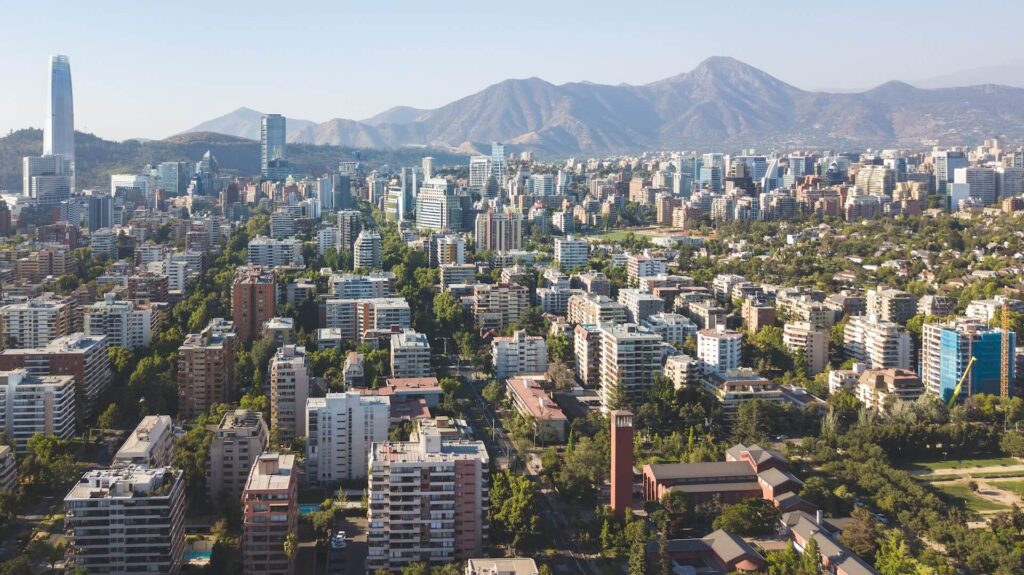
The following words and phrases are worth going over and over until you can say them pretty much automatically, as they will be some of the basic building blocks to your Spanish knowledge.
- Hablo español / No hablo español . — I speak Spanish / I don’t speak Spanish.
- ¿Tiene…? — Do you have…?
- Tengo… no tengo… — I have… I don’t have…
- Entiendo, no entiendo — I understand, I don’t understand
- ¿Entiende? — Do you understand?
- Quiero, no quiero — I want…, I don’t want… E.g. quiero un boleto, un taxi, un hotel — I want a ticket, a taxi, a hotel…
- Me gustaría, no me gustaría… — I would like…, I wouldn’t like… (This one is more polite)
- ¿Dónde está…? — Where is… ?
- ¿Cuánto cuesta? — How much does it cost?
- ¿Qué hora es? — What time is it?
How to Ask for Directions in Spanish
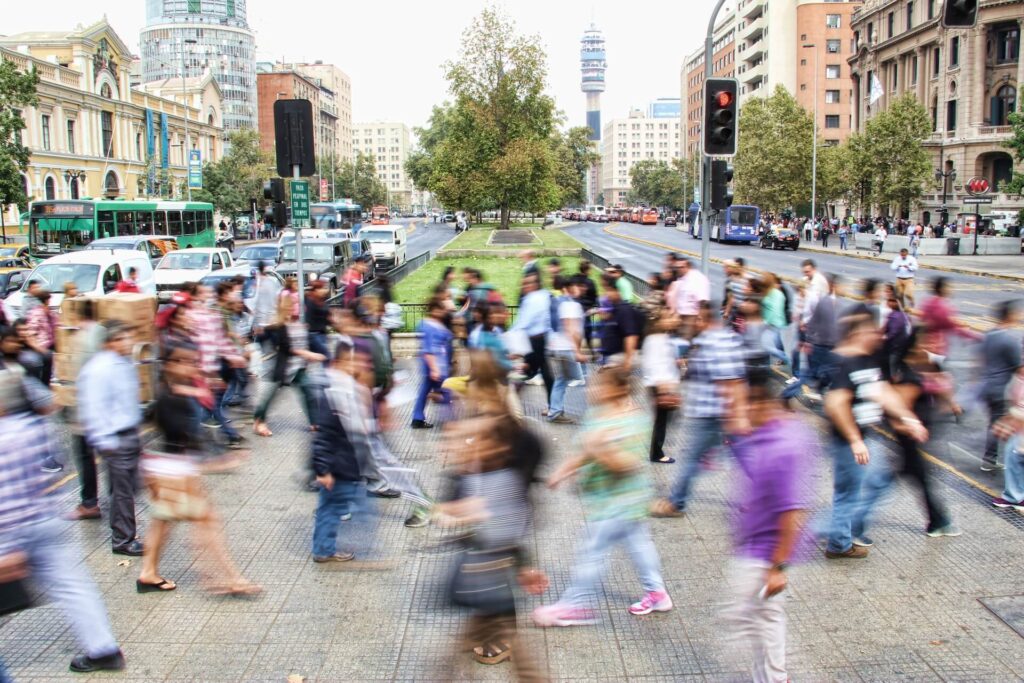
Learning how to ask for directions is perhaps not as essential as it was twenty years ago, before the development of the internet and Google Maps.
However, if you find yourself in a situation where you can’t use your cellphone (which can easily happen!), you should know the basic Spanish phrases and vocabulary for finding your way around.
- ¿Dónde está…? — Where is the…?
- ¿ Cómo llego al centro? — How do I get to the centre/downtown?
- ¿Hay un restaurante bueno por aquí? — Is there a good restaurant around here?
- Busco un hotel/hostal — I’m looking for a hotel/hostal
With the phrases above you can ask for directions to other places, such as the bank, a bathroom etc. Here is some useful vocabulary to substitute into these phrases:
- El baño — the bathroom
- Un tren — a train
- La calle — the street
- Un cajero automático — an ATM
And lastly some practical vocab to help you understand the helpful directions people give you:
- A la derecha — to the right
- A la izquierda — to the left
- Derecho — straight ahead
- Una cuadra — a block
- Sigue… — keep going…
How to Ask for Help in Spanish

While there are many things you must learn if you want to speak Spanish, knowing how to ask for help is key to surviving in a Spanish-speaking country.
A few phrases or words will make things much easier if an emergency occurs or you are in trouble, including the following:
Note: These examples use the “formal” way of speaking to people.
- ¿Puede ayudarme? — Can you help me?
- ¡Ayuda! — Help!
- Necesito ayuda — I need help
- ¡Llame a la policía! — Call the police!
- ¡Llame a la ambulancia! — Call the ambulance!
- Ayúdeme, por favor . — Help me, please
- ¿Podría ayudarme, por favor? — Could you help me, please?
- ¿Podría explicarlo, por favor? — Can you explain it to me, please?
- ¿Cómo se escribe…? — How do you write…?
- ¿Cómo se dice…? — How do you say…?
Spanish for Medical Emergencies

It’s also important to know words in Spanish that can help us deal with a medical emergency.
- No me siento bien — I don’t feel well
- ¿Dónde está el hospital más cercano? — Where is the nearest hospital?
- ¿Puede llamar a la ambulancia? — Can you call the ambulance?
- ¿Dónde está la farmacia? — Where is the drugstore/pharmacy?
- ¿El doctor habla inglés? — Does the doctor speak English?
- ¿Necesito medicinas? — Do I need medication?
- ¿Qué medicina necesito? — What medicine do I need?
- Tengo un seguro de salud internacional — I have international health insurance
Navigating Your Accommodation in Spanish
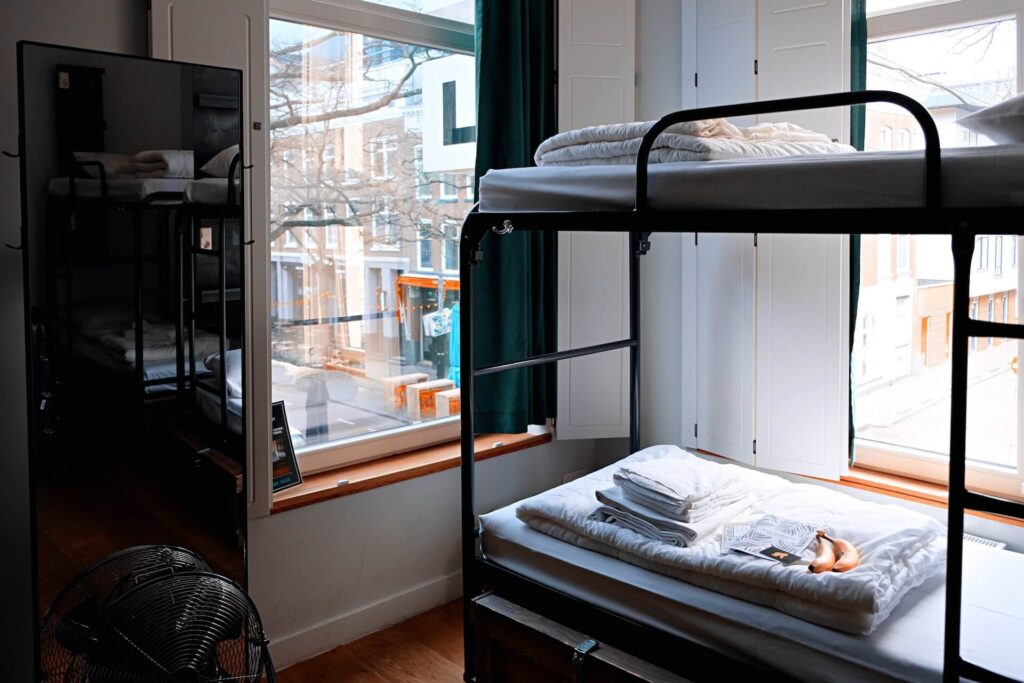
Once you’ve found the perfect place to stay, here’s how to get yourself checked in and comfortable:
- Tengo una reserva a nombre de Harry Potter — I have a reservation under the name Harry Potter
- Necesito un hotel / un cuarto / un cuarto con baño — I need a hotel / a room / a room with a bathroom
- Me gustaría quedarme por dos noches — I would like to stay for two nights
- ¿Tiene una habitación doble? — Do you have a double room?
- ¿Dónde está la piscina / gimnasio? — Where is the pool/gym?
- ¿A qué hora es el desayuno? — What time is breakfast?
- ¿Cuál es la contraseña de WiFi? — What is the WiFi password?
Essential Spanish for Eating Out

The most important travel Spanish phrases to add to your mental toolbox are those surrounding eating out—either because we are hungry (obviously) or we want to experience the wonderful local gastronomy.
This list of expressions and words could save your life (well, your stomach) on your next adventure in a Spanish-speaking country.
In addition to the vocabulary below, a useful resource are these scenario podcast episodes we did about ordering vegetarian food in Spanish , and ordering coffee in Spanish .
To make things easier, we have divided these restaurant-related words and phrases into several categories. Check them out below:
When Arriving or Booking a Table
- Quisiera reservar una mesa — I would like to book a table
- Quisiera reservar una mesa para dos — I would like to book a table for two
- ¿Tiene alguna mesa disponible? — Is there any available table?
- Tengo una mesa reservada a nombre de Hermione Granger — I have booked a table under the name of Hermione Granger
When Ordering
- ¡Camarero / garzón! — Waiter !
- ¿Podría traerme el menú, por favor? — Could you bring me the menu, please?
- ¿Qué me recomienda? — What do you recommend?
- ¿Podría recomendarme un plato local, por favor? — Can you recommend me a local dish, please?
- Para beber, me gustaría… — To drink, I would like…
- Como entrada, me gustaría.. . — As a starter, I would like …
- Como plato principal, me gustaría… — For the main course, I would like…
- De postre, me gustaría… — For dessert, I would like…
During the Meal
- Perdone, ¿podría traerme…? — Excuse me, could you bring me…?
- Perdone, ¿podría traerme más servilletas? — Excuse me, could you bring me some more napkins?
- Perdone, ¿podría traerme otra copa de vino ? Excuse me, could you bring me another glass of wine? (learn this one by heart 🍷)
- La comida está muy rica . — The food is delicious
- La carne está demasiado hecha — The meat is overcooked
- La carne está poco hecha — The meat is undercooked
When Paying and Leaving
- La cuenta, por favor — The bill, please
- Estaba todo muy rico, gracias — Everything was very tasty, thanks
- Quisiera pagar con tarjeta — I’d like to pay by card
- Quisiera pagar en efectivo — I’d like to pay in cash
- Creo que hay un error — I think there’s a mistake
Lastly, if you’re a foodie like me, you might want to know some food recommendations. Click here to learn about the different foods you must try if you’re visiting Chile!
Resources to Learn More Travel Spanish
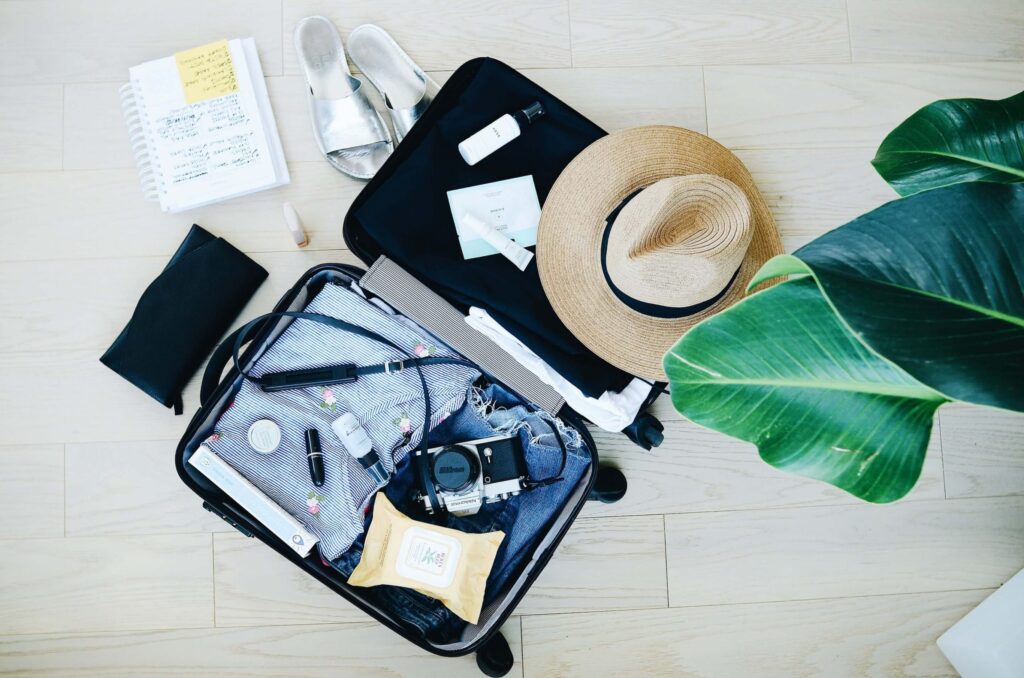
If you’ve decided you want to know a bit more than just the survival Spanish, here are a few resources to kick-start your Spanish journey.
- Seeing in Spanish Podcast. Our own language learning and travel podcast aims at helping you self-learn Spanish to make your travels unforgettable. To start, check out this episode on how to learn Spanish on your own .
- Duolingo. I think it’s safe to assume you know what Duolingo is! While it often gets a bad rap, it’s all about how you use Duolingo which makes the difference!
- YouTube Videos. Videos such as this video on top 20 travel Spanish phrases you should know are a great way to hear how phrases we learnt in this article are actually pronounced.
It’s also worth remembering that Spanish changes depending on what country you’re in, so you might also want to consider learning a specific Spanish dialect.
With these survival Spanish words and phrases, your next trip will be much easier and more memorable.
Now you can move on to getting excited for your adventure!
- Cambridge Dictionary +Plus
Translation of trip – English–Spanish dictionary
Your browser doesn't support HTML5 audio
- You should always check your oil , water and tyres before taking your car on a long trip.
- How about a trip to the zoo this afternoon ?
- She's going on a trip to New York, all expenses paid .
- The travel company has written giving information about the trip.
- He's always going off around the world on business trips, leaving his wife to cope with the babies by herself.
LOSE BALANCE
- The bowler tripped as he was delivering the ball .
- She tripped and fell over.
- I tripped as I got off the bus .
- She tripped over the rug .
- I tripped on a piece of wire that someone had stretched across the path .
(Translation of trip from the Cambridge English-Spanish Dictionary © Cambridge University Press)
Translation of trip | GLOBAL English–Spanish Dictionary
(Translation of trip from the GLOBAL English-Spanish Dictionary © 2020 K Dictionaries Ltd)
Examples of trip
Translations of trip.
Get a quick, free translation!

Word of the Day
singing or playing notes that are at the right pitch (= level) or that agree with others being sung or played

Alike and analogous (Talking about similarities, Part 1)

Learn more with +Plus
- Recent and Recommended {{#preferredDictionaries}} {{name}} {{/preferredDictionaries}}
- Definitions Clear explanations of natural written and spoken English English Learner’s Dictionary Essential British English Essential American English
- Grammar and thesaurus Usage explanations of natural written and spoken English Grammar Thesaurus
- Pronunciation British and American pronunciations with audio English Pronunciation
- English–Chinese (Simplified) Chinese (Simplified)–English
- English–Chinese (Traditional) Chinese (Traditional)–English
- English–Dutch Dutch–English
- English–French French–English
- English–German German–English
- English–Indonesian Indonesian–English
- English–Italian Italian–English
- English–Japanese Japanese–English
- English–Norwegian Norwegian–English
- English–Polish Polish–English
- English–Portuguese Portuguese–English
- English–Spanish Spanish–English
- English–Swedish Swedish–English
- Dictionary +Plus Word Lists
- trip (JOURNEY)
- trip (LOSE BALANCE)
- GLOBAL English–Spanish Noun Verb
- Translations
- All translations
Add trip to one of your lists below, or create a new one.
{{message}}
Something went wrong.
There was a problem sending your report.

15 BEST Costa Rican Spanish Phrases For Travel
A s you travel to Costa Rica for your next vacation, you probably want to learn to speak a few basic Spanish phrases. This guide will help you learn to use and pronounce some of the most common phrases in Costa Rican Spanish.
I’m positive I’m biased, but I think I learned Spanish in the best country in the whole world to do so! Costa Ricans are known throughout Latin America for their laid-back attitude and very clear pronunciation of Spanish. The combination of these two traits makes it the ideal place for anyone to practice their Spanish – from novice to fluent speakers.
Add in the fact that the tourism industry has been booming in Costa Rica for many years, so if you are visiting Costa Rica for the first time – especially visiting Costa Rica with kids – you will find many ticos (as Costa Ricans call themselves) speak excellent English.
Read more: Awesome Places to Stay In Costa Rica
Still, it’s important when you learn a language to have a few words and phrases handy that you know you’ll be using frequently. In Spanish-speaking countries, even trying to use just a few common Spanish phrases goes a long way to show respect to locals.
Here are 15 simple and common Costa Rican Spanish travel phrases that any traveler to Costa Rica will find helpful as they explore one of the most beautiful countries on Earth.
I’ve also included a quick explanation of when and how to use each phrase so that you will be culturally appropriate when you practice your Spanish. If you want to have all of these phrases in one place, I highly recommend my favorite Costa Rican Spanish book .
If you feel like you’ve got a good handle on basic Costa Rican Spanish, check out this great post on Costa Rican slang . I guarantee you will find a few hilarious phrases you’ll have a lot of fun trying out!
List of 10 Common Costa Rican Spanish Phrases
1- buenos días – ( bwe -nos dee -as) – good morning.
It is customary in Costa Rica to greet everyone with this phrase, even if you do not know them. It is especially common to say this when you are walking into a room where there are already people (such as at breakfast) and before starting a conversation or asking a question.
2- Buenas tardes – ( bwe -nas tar -des) – Good afternoon
The same custom for use of buenos días is also used for buenas tardes, which is also used as a leave-taking phrase. “Afternoon” in Costa Rica is considered until 6 p.m.
3- Buenas noches ( bwe -nas no -ches) – Good evening/good night
Again, the use of buenas noches when entering or exiting a room and before beginning a conversation is customary in Costa Rica.
4- Hola ( oh -la) – Hello
Hola is used in the same way that hello is used in the United States- it’s a very conversational Spanish phrase.
5- Por favor (por-fa- vo r) – Please
You can never use this phrase too often in Costa Rica, which values gratitude and politeness!
6- Gracias ( grah -si-ahs) – Thank you
Another phrase that you really can not overuse.
7- ¿Cómo le va? ( Koh -mo lay vah) – How’s it going?
Costa Rican Spanish uses this question in all situations where Americans would use the phrase “How’s it going?”
8- Bien (bee-en) – fine, well
This is the most common response to the question how’s it going? Most Costa Ricans will not answer otherwise until they know you well.
9- ¡ Pura Vida ! -( pu -dah bi- dah) – Great, awesome, wonderful, no worries, good people
Pura Vida Costa Rican national phrase, it means anything positive. It’s the most important Costa Rican Spanish phrase. Use it liberally and watch others smile at you.
10- Mucho gusto ( moo -cho guhs -toh) – Nice to meet you, you’re welcome
When you first meet someone new, you will simply respond mucho gusto. Also, when someone tells you “gracias” you can also respond by saying “mucho gusto.” Costa Rica is one of the only countries that regularly uses “mucho gusto” as both “you’re welcome” and “nice to meet you.”
Related post: 20 Marvelous Beaches on Costa Rica’s Pacific Coast
Additional Basic Spanish Phrases for Travel
11- ¿habla inglés ( ah -blah een- gles ) – do you speak english.
This is another one of those Spanish phrases for travelers that is especially helpful.
12- ¿Cuánto vale? ( kwan -toh ba -leh) – How much is it?
It’s a good idea to ask how much things cost in advance or before you agree to pay for them. This phrase is the most common way to pose the question in Costa Rica. Costa Ricans generally do not use cuánto cuesta, which is more common in the rest of Latin America.
Read also: Costa Rica Currency
13 – ¿A qué hora es ….? (ah ke or -ah es) What time does… start?
Time is relative in Costa Rica, and it is a good idea to ask what time things will begin, but also be flexible within a half-hour each way.
14 – ¿Dónde queda …? ( dohn deh kay dah) Where is…?
Distance can also be relative in Costa Rica, and it’s a good idea to ask about your mode of transportatio n too!
Read also: Driving In Costa Rica – Complete Guide
15- ¿Aceptan dólares? (Ah- sep -tahn doh -lah-rays) Do you take dollars?
Many places will take, or even prefer dollars. This doesn’t mean you will get your change back in dollars if you don’t have the exact change.
16 – ¿Puedo pagar con tarjeta? ( Pwe -doh pa- gahr cohn tar- heh -tah) Can I pay with a card?
Costa Rica is super modern in this respect, there are so many places that take cards. Expect to show ID during the transaction and for Costa Rican merchants to pass along any transaction fees to you.
Is Costa Rican Spanish different?
Costa Rican Spanish is very similar to Spanish in the rest of Central America. You’ll find a wide spread of either “usted” or “vos” to refer to someone else, as opposed to “tú” as used in other parts of Latin America and Spain.
What does Pura Vida mean?
Pura vida could be considered Costa Rica’s official phrase. It literally translates to “pure life” and means everything from awesome to cool to good.
The post 15 BEST Costa Rican Spanish Phrases For Travel appeared first on Pura Vida Moms .

Want to travel with style? These 7 items got you covered
- Show more sharing options
- Copy Link URL Copied!

If you buy a product linked on our site, The Times may earn a commission. See all our Coveted lists of mandatory items here .
Miu Miu canvas and leather bucket bag, $2,050

Miu Miu is one of the buzziest brands in fashion right now, and for spring and summer, the Prada Group label has delivered bags that are perfect for a jaunt to Malibu, Newport Beach or Manhattan Beach. This canvas and leather bucket bag has a front leather lettering logo, adjustable leather handle, a linen lining, gold-tone hardware and leather drawstring closure — all adding to the bag’s charm.
Purchase 👉🏽 here .
Celine sunglasses, $440

Animal prints are everything right now, and the message you’ll send wearing these women’s squarish-frame sunnies from Celine is that you’re fashionable with a slight wild side. Along with Leopard Havana, the sunglasses also come in three subdued color options: light pink, black and white. All come with a crossbody pouch.
Palm Angels PA 4 sneakers, $620

For Italian fashion brand Palm Angels’ spring and summer collection (pieces generally range from $300 to $4,500), the vibe is once again all about the City of Angels — and for good reason, right? Just check out the new styles of the brand’s PA 4 kicks that feature palm trees stitched on the sides.
Cult Gaia Celia one-piece swimsuit, $328

Cult Gaia’s Celia one-piece swimsuit should be tucked into your luggage for a trip to Palm Springs or St. Barts. The swimsuit, which comes in black and a matcha-looking color called tea, has a high-thigh cut, low back and wired neckline. Sizes range from XXS to XL.
Tumi Extended Trip Expandable 4 Wheeled Packing Case, $950
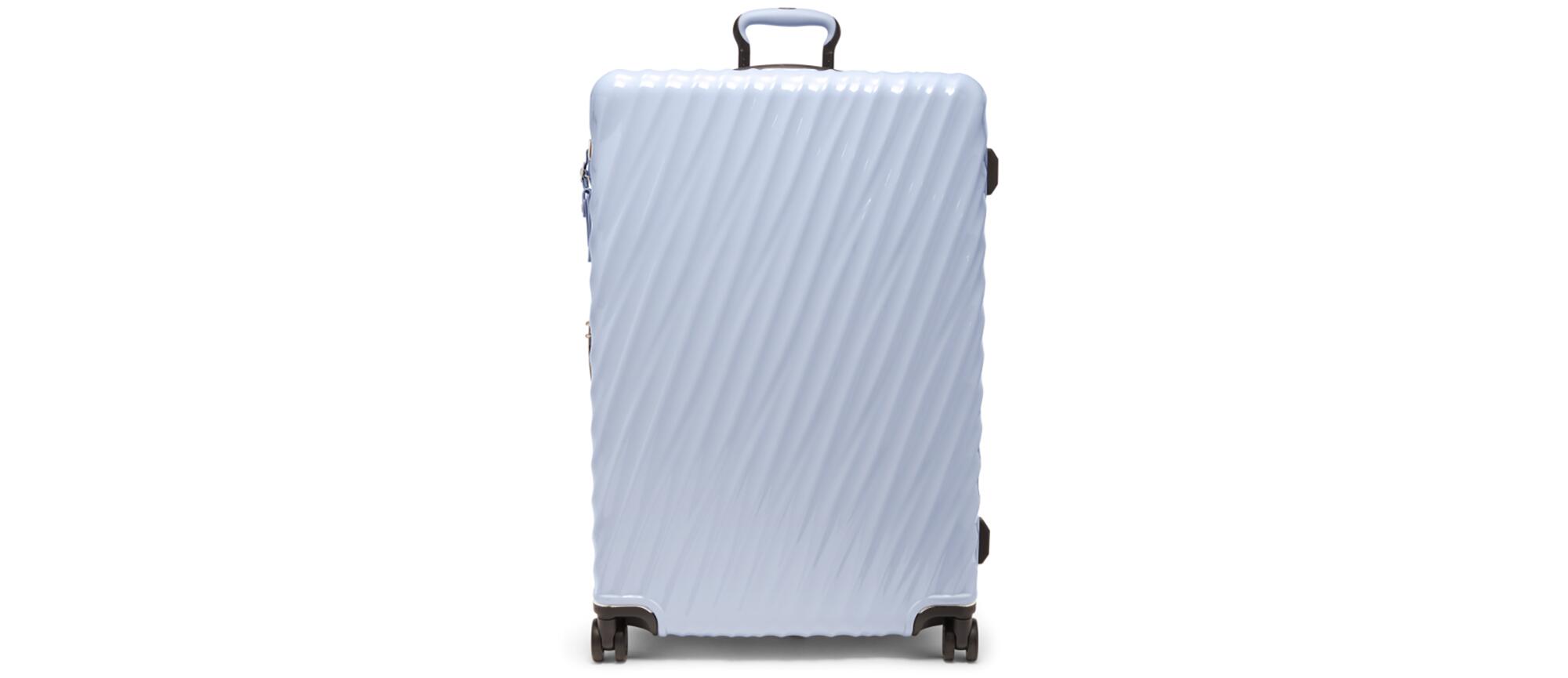
Unless you’re flying private, you know how it goes at the luggage pickup: Figuring out which black bag on the conveyor belt is yours. Stand out with this lightweight Tumi suitcase in halogen blue that has a recycled polycarbonate shell, an integrated TSA lock and a dual-compartment zip pocket. You can monogram it as well as buy it in other colors: hunter green, black, navy and red.
Saint Laurent Rive Droite mini speaker, $80

Instead of earbuds, play the new Beyoncé album poolside, with this portable speaker from French brands Saint Laurent Rive Droite and Lexon. The Mino mini speaker works via Bluetooth and is compact, rechargeable and comes in a bright colors: mustard, Majorelle blue, bright red, fuchsia violet and aqua.
Orlebar Brown Bulldog swim shorts, $395

How do you tell everyone you’re from SoCal without saying it? Get your hands on these Bulldog swim shorts from Orlebar Brown that feature a 1957 Slim Aarons photo of cars parked outside the Beverly Hills Hotel on Sunset Boulevard. The mid-length swim shorts are made from printed recycled polyester and have adjustable side fasteners.
Prices and availability of items in Coveted are subject to change.
More to Read

Your guide for what to see, shop and journey for in April
April 1, 2024

Two Californians sue Hermès, claiming Birkin handbags are offered only to repeat customers
March 20, 2024

15 drip and beauty items to get some spring in your step
March 14, 2024

Marques Harper is a deputy features editor at the Los Angeles Times. He previously covered fashion for the Austin American-Statesman and media and culture for the Roanoke Times. A native of New Jersey, he has a B.A. in English from Rutgers University and an M.S. in digital media management from the University of Southern California.
More From the Los Angeles Times

Designer Bobby Cabbagestalk styles an Acne Studios bag for the future
April 10, 2024

This teacher will guide you into talking with your dreams. A warning: They will talk back
April 3, 2024

Presenting the Spring Issue: It’s time to play

An ode to the flower sellers of L.A.’s Flower District
Barcelona is increasing its tourist tax next week - here’s how much you’ll have to pay from April
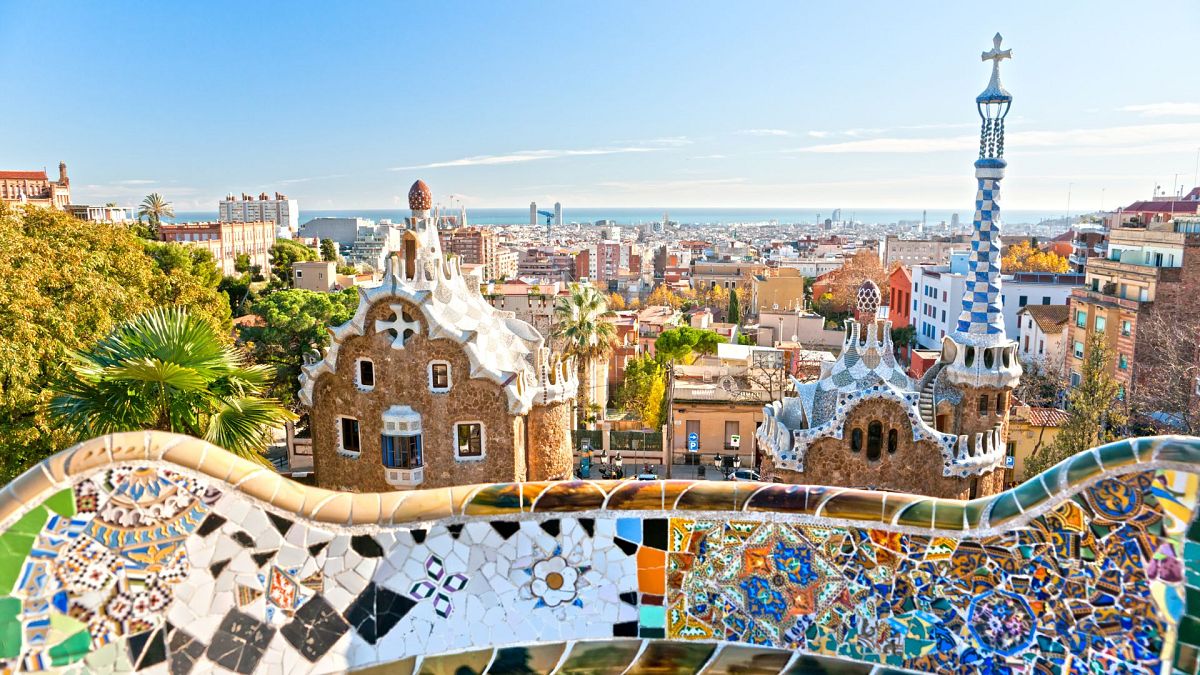
The Spanish city first introduced an extra tourist tax in 2012 to attract ‘quality’ tourism.
Barcelona’s tourist tax is set to rise once again on 1 April.
Since 2012, the visitor hotspot has added an extra fee on top of the region-wide tourist tax.
In 2022, city authorities announced that the fee would be increased over the next two years.
The city’s surcharge varies depending on the type of visitor accommodation and is only levied on official tourist lodging.
Barcelona is Spain ’s most visited city and continues to struggle with overtourism.
How much is Barcelona’s tourist tax?
Visitors to Barcelona have to pay both the regional tourist tax and the city-wide surcharge.
The regional tax varies depending on the type of accommodation you are staying in. For four-star hotels it is €1.70, for rental accommodation like Airbnb it is €2.25, and for five-star and luxury hotels it is €3.50.
Cruise passengers spending less than 12 hours in the city pay €3 to the region, while those spending more than 12 hours pay €2.
The city tax, which applies to a maximum seven-night stay, has been steadily increasing. In April 2023, it rose from €1.75 to €2.75 for all types of stay. From April 2024, it will increase once again to €3.25.
What does that mean for accommodation prices in Barcelona in 2024?
As of 1 April 2024, visitors to Barcelona will have to pay €3.25 to the city on top of the regional tourist tax - an increase of €0.50 per night.
That means guests in five-star accommodation will pay a total of €6.75 per night - €47.25 per person for a week’s stay.
In rental accommodation, the fees add up to €5.50 per night or €38.50 for a week-long stay, on top of the nightly cost of the accommodation.
Cruise day-trippers will pay €6.25. The idea behind this is to encourage “quality” tourism over big numbers, according to the city mayor.
- Plaza de España: Seville’s plan to charge entry fee for iconic square sparks backlash
- Spain’s digital nomad visa one year on: How are remote workers and locals getting along?
Why does Barcelona have a tourist tax?
Barcelona’s authorities have said the increased tourist tax aims to attract ‘quality’ tourism over big visitor numbers.
The city sees an average of 32 million visitors a year, many of whom arrive on cruise ships.
In 2022, the Catalan capital launched new measures to curb disruption from guided tours including noise restrictions and one-way systems.
The hike in the tourist tax, which is divided between Barcelona ’s Generalitat and the City Council, will also bolster the city’s budget.
- Overtourism: From Venice to Marseilles, here’s how European travel hotspots are tackling overtourism
Authorities hope the fee will bring in as much as €100 million in 2024.
“The economic data for tourism in 2019 is already increasing, not in the number of tourists, but in the amount of income from tourism in Barcelona,” deputy mayor Jaume Collboni said.
“It was the objective sought: to contain the number of tourists and increase tourist income because our model is no longer mass tourism but quality tourism, which adds value to the city.”
The council said the proceeds would be used to fund the city’s infrastructure, including improvements to roads, bus services and escalators.
What other Spanish cities have a tourist tax?
Barcelona isn’t the only tourist hot spot in Spain taxing visitors to cope with their impact.
The Balearic Islands (Mallorca, Menorca, Ibiza , Formentera), charges a nightly fee of €1-4 for each holidaymaker aged 16. Known as the Sustainable Tourism Tax, it is used to promote better tourism practices and conserve the islands’ nature.
Valencia planned to introduce a similar measure at the end of last year, but it was scrapped following the 2023 elections. It would have seen travellers pay between 50 cents and €2 per night for up to seven nights.
You might also like
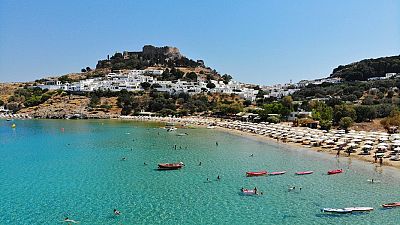
Rhodes gives ‘free’ trips to tourists forced to flee wildfires
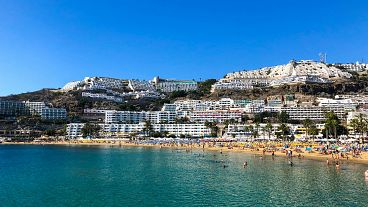
Canary Island residents plan hunger strike to protest mass tourism
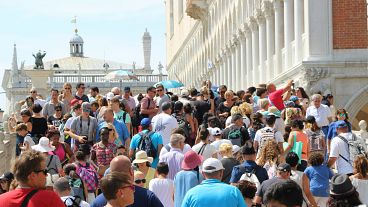
‘Venice is not a museum’: Activists slam new day-tripper fee
on my next trip
Making educational experiences better for everyone.
Immersive learning for 25 languages
Marketplace for millions of educator-created resources
Fast, easy, reliable language certification
Fun educational games for kids
Comprehensive K-12 personalized learning
Trusted tutors for 300+ subjects
35,000+ worksheets, games, and lesson plans
Adaptive learning for English vocabulary
Advertisement
Supported by
¡Vámonos! Dora Is Back for a New Round of Exploring
Boots, Map, Swiper and Backpack all return too, in a new “Dora” that includes a lot more Latin music and Spanish language.
- Share full article

By Laurel Graeber
Barbie isn’t the only childhood heroine experiencing a renaissance. Yet unlike the doll of last year’s blockbuster movie, the next pop-culture star who’s about to re-emerge isn’t a statuesque blonde in stiletto heels. She’s a pint-size Latina with sturdy sneakers and a trusty backpack.
Welcome back, Dora.
Nickelodeon, the network that in 2000 introduced “ Dora the Explorer ,” the groundbreaking bilingual animated show about the adventures of a 7-year-old Hispanic girl, is now rebooting that hit series , which over eight seasons aired in more than 150 countries, winning multiple awards and inspiring two TV spinoffs and a feature-length film .
The new show’s catalyst “wasn’t necessarily that the first series was over,” Valerie Walsh Valdes, a creator and executive producer of “Dora,” said in a video interview. (“Dora the Explorer” continues to stream on various outlets, including YouTube.) “It was, ‘OK, how are we extending it, how are we going to grow her? And what’s the next iteration?’”
On Friday, Paramount+ will release a full season of 26 streaming episodes of the new show, which is titled simply “ Dora ” and which will also air internationally on the Nick Jr. channel . (Select episodes will be on YouTube as well.) An accompanying podcast, “ Dora’s Recipe for Adventure ,” will expand the little girl’s exploits into the culinary sphere.
The 2024 “Dora” combines old and new. The series retains all the core characters — Dora; her sidekick, the monkey Boots; her talking tools, Backpack and Map; and her antagonist, the thieving fox Swiper — while featuring them for the first time in computer-generated animation. The show still focuses on expeditions that teach problem-solving strategies and social skills, but Map now has some high-tech capabilities. Dora and Boots continue to embark on missions to find lost objects or aid friends in a magical rainforest, but the quests are faster-paced: Each “Dora” episode is now an 11-minute story. And, significantly, the series will incorporate a greater breadth of Latin music and more Spanish language for Dora.
“We thought about her as just the great communicator for preschoolers,” said Chris Gifford, another creator and executive producer of the new series. (He and Walsh Valdes also developed the original “Dora the Explorer” with Eric Weiner, who is not involved in the new show.) “And not only a communicator for preschoolers, but a communicator for preschoolers in two languages.”
For instance, the first spoken words of the “Dora” premiere are “¡Hola!” and then, “Soy Dora” (“I’m Dora”), which Dora says while pointing to herself. Boots adds, “And I’m Boots.” Whether a child is growing up with English or Spanish, it’s easy to discern the characters’ meaning in the series, which is intended to help little viewers master new language skills.
The animation also enhances Dora’s ability to relate to the audience, Walsh Valdes said. The 3-D look can make the character feel more real when she leans in and asks the viewer, for example, which of the three items in her backpack will help her and Boots reach their destination.
“With CG,” Walsh Valdes said, referring to computer-generated animation, “one of the great things is that it feels like you’re along for the ride, and it could really forge that connection even more.”
Dora is becoming three-dimensional in other ways, too. In the new series, her previously unidentified Hispanic background has become specific: Mexican, Cuban and Peruvian. Diana Zermeño, the 10-year-old Californian who voices Dora, is herself the daughter of Mexican immigrants. Kathleen Herles, who played Dora in the original series, is of Peruvian ancestry and has now returned to Nickelodeon to voice the little girl’s mother.
“We have those connections to our characters,” Herles said during a video conversation. “And I think it just adds more depth. Not just for us and for our characters, but to the show, too.”
Dora’s ethnicity should also resonate with the audience. According to the U.S. Census Bureau, more than 19 percent of Americans are Hispanic, as are more than 25 percent of the nation’s children. “Dora” now joins a television landscape that includes characters like PBS’s Alma, of “ Alma’s Way ,” who is Puerto Rican, and Rosie, of “ Rosie’s Rules ,” who is Mexican American.
“We’re not living in a world where we can say Latin culture is one thing,” Ramsey Naito, president of Paramount Animation and Nickelodeon Animation, said in a video interview. Eighty percent of the writers for “Dora,” she added, are Latino themselves and can “contribute authentically to the stories.”
One episode, for instance, focuses on the Latin American shirt known as a guayabera , which is thought to have originated in Cuba, while another introduces alebrijes , the colorful carved wooden animals of Mexican folk art. In that tale, “The Alebrije Adventure,” the alebrijes are living creatures, and one, the jaguar Ale, voiced by the Mexican-born actress Kate del Castillo , enlists Dora’s help (and the audience’s) in restoring the rainbow water that feeds the creatures’ magical tree. While those elements are pure fantasy, the term “alebrije” is real. But how to help small children remember it?
The key, Gifford explained, is to make music a language-learning tool. A difficult word, he said, “we can repeat over and over in a song, so it gets hooky.”
The “Dora” music is also intended to “be something that kids and parents would enjoy,” Rich Magallanes, another executive producer for the series, said. The creative team hopes that people who grew up with “Dora the Explorer” will join their children to watch the new show. “Dora” includes music by the Grammy-winning Cuban American composers George Noriega and Joel Someillan and performances by musicians like Taboo , of the Black-Eyed Peas, who is Mexican American and Native American. (He’s also a guest star, voicing the fantasy bird Quickatoo.)
“I used to watch it a lot,” Zermeño said of the original series. “Even my grandpa, he would pretend to be Swiper.” Now, she added, when playing Dora, “I can kind of see myself in her to the point where I don’t really need to act.”
Dora, however, appears in situations that non-Hispanic children will recognize, too. In “Catch the Quickatoo,” she and her friends help Dora’s abuela get a picture of that fast-moving bird by using Map’s new features, which include snapping photos and issuing alerts. In these ways the modernized Map has become subtly like a smartphone, an accessory the show’s creators were still determined not to give Dora.
“I don’t think you need one of these for imagination,” Naito said, holding up her cellphone.
“Dora” also emphasizes heart, Magallanes said. In the episode “Rainforest Ritmo,” Boots is flummoxed by a party invitation because he doesn’t think he can master a new dance. Dora sings a song about learning “one step at a time,” and helps the monkey practice while also taking him through the challenges of the journey to the celebration.
When asked whether current controversies over immigration and border policies had influenced the series’s development, Gifford noted that while preschool shows understandably avoid politics, they do offer models for behavior.
“She is a friend to all,” he said of Dora. “And Carlos Cortés , who was our cultural content adviser for many, many years, always talked about Dora as a bridge builder. She doesn’t erect barriers, she builds bridges. And that’s still a huge part of her appeal.”
Explore More in TV and Movies
Not sure what to watch next we can help..
Even before his new film “Civil War” was released, the writer-director Alex Garland faced controversy over his vision of a divided America with Texas and California as allies .
Theda Hammel’s directorial debut, “Stress Positions,” a comedy about millennials weathering the early days of the pandemic , will ask audiences to return to a time that many people would rather forget.
“Fallout,” TV’s latest big-ticket video game adaptation, takes a satirical, self-aware approach to the End Times .
“Sasquatch Sunset” follows the creatures as they go about their lives. We had so many questions. The film’s cast and crew had answers .
If you are overwhelmed by the endless options, don’t despair — we put together the best offerings on Netflix , Max , Disney+ , Amazon Prime and Hulu to make choosing your next binge a little easier.
Sign up for our Watching newsletter to get recommendations on the best films and TV shows to stream and watch, delivered to your inbox.
855-997-4652 Login Try a Free Class
Your Go-to Guide to Say Safe Travels in Spanish
Wish your friends safe travels in Spanish!
Summer vacations have begun, and there are many places where you and your friends or family can go.
Many of these tourist destinations are Spanish-speaking countries or cities where you will find a large majority of Spanish-speaking population.
Also, your Latin American or Spanish friends will surely return to their native country to visit family or friends.
And we always want these trips and vacations to go as exciting and smooth as possible for everyone to return home safely.
In this article, we’ll share a definitive guide to wish your friends safe travels in Spanish.
Let’s start the tour!
Join 559 million people on the planet who speak Spanish! Sign up for your free trial Spanish class today. ➡️
Basic Travel Vocabulary in Spanish
Whenever you travel, no matter where, you should come prepared with a robust Spanish vocabulary of words to use during your visits.
So, we will give you some important words that you will use in your travels through Latin America.
Let’s start with the most essential thing, travel documents.
You must also know the names of the places you will have to transit when you travel.
And finally, we leave you the necessary vocabulary in Spanish to know the names of transportation you can take.
Must read: Qué Tal vs Cómo Estás: What’s the Difference?
Phrases and Expressions to Wish Safe Travels in Spanish
Practice makes perfect, and it is the best way to use all the learning you have acquired in your Spanish classes and apply it to new topics.
Here are some common phrases you can use about traveling in Spanish and wishing your friends safe travels.
Remember that these expressions apply in most Spanish-speaking countries.
But always keep in mind the Spanish slang of each region to make the correct variations and keep learning new things.
Que tengas un buen viaje.
Have a good trip.
Viaja con cuidado.
Travel safely.
Que llegues bien.
Arrive safely.
Que disfrutes el viaje
Enjoy the trip
¡Que te diviertas!
Has trabajado duro por este viaje, ¡te lo mereces!
You’ve worked hard for this trip; you deserve it!
There are also ways you can express concern and positive wishes when your loved ones are away.
Cuídate mucho.
Que todo salga bien.
May everything go well.
Espero que tengas un viaje tranquilo.
I hope you have a peaceful journey.
Espero que tu estadía sea placentera.
I hope your stay is pleasant.
¡Te extrañaré! Pero estoy feliz de que conozcas nuevos lugares .
I will miss you! But I am happy that you get to know new places.
Que estés seguro dondequiera que estés. ¡Disfruta el viaje!
Be safe wherever you are. Enjoy the trip!
If you want to have more conversations about your relatives’ trip and how to help them, here are some questions and expressions that can help you.
¿Cómo vas a viajar?
How are you traveling?
Si necesitas algo durante tu viaje, no dudes en decirme.
If you need anything during your trip, don’t hesitate to let me know.
¿Necesitas que te recoja en el aeropuerto?
Do you need me to pick you up at the airport?
Si deseas puedo prestarte mis maletas de viaje con ruedas.
If you want, I can lend you my travel suitcase with wheels.
¿Ya tienes todos tus papeles en orden para viajar?
Do you already have all your papers in order to travel?
Si aún no tienes quien cuide a tu perro yo puedo hacerlo con gusto.
If you still don’t have someone to take care of your dog, I can gladly do it.
Tengo un amigo en el país que viajas por si necesitas ayuda en caso de una emergencia.
I have a friend in the country you’re traveling in if you need help in an emergency.
We recommend: 50 Simple Spanish Questions To Ask in a Conversation (and How To Answer)
Tips for Responding to Good Wishes in Spanish
Showing gratitude for the good wishes on a trip from the people around us is important to maintain a close relationship.
Although it may seem very easy, there are many more ways to say thank you than with a simple gracias . Here we show you other alternatives to thank the good wishes and appreciation.
Muchas gracias por tus buenos deseos.
Thank you very much for your good wishes.
Aprecio tu preocupación.
I appreciate your concern.
Gracias de nuevo.
Thanks again.
Gracias por todo.
Thank you for everything.
Gracias por tu ayuda.
Thank you for your help.
Gracias por tu apoyo.
Thank you for your support.
Gracias por darme un aventón.
Thank you for the ride.
Gracias por preguntar.
Thanks for asking.
¡Eres el mejor!
You’re the best!
Agradezco lo que hiciste.
I am grateful to you for what you did.
Eres muy amable.
You’re very kind.
Te lo agradezco de todo corazón.
I appreciate it from the bottom of my heart.
Te lo agradezco genuinamente.
I genuinely appreciate it.
Gracias, significa todo para mí.
Thank you, it means everything to me.
Read also: 100+ Basic Spanish Words and Phrases for Travelers
Examples of Using Safe Travel Expressions in Spanish
Tu hija nos contó que se van de viaje para el verano.
Your daughter told us they are going on a trip for the summer.
¡Sí! ¡Estamos muy emocionados! Haremos un viaje de quince días a Costa Rica.
Yeah! We are very excited! We will take a fifteen-day trip to Costa Rica.
¡Qué emocionante! ¿Y ya tienen todos sus papeles en orden para viajar?
How exciting! And do you already have all your papers to travel?
Sí, ya chequeamos y no necesitamos permisos ni vacunas.
Yes, we already checked, and we don’t need permits or vaccinations.
¡Perfecto! ¡Que disfruten el viaje!
Perfect! Enjoy the trip!
Hola abuela, te he llamado para darte la buena noticia. ¡Ya compré mi boleto a España! ¡Pronto te visitaré!
Hello, grandma, I have called you to give you the good news. I already bought my ticket to Spain! I will visit you soon!
¡Qué alegría! ¿Necesitas que te recoja en el aeropuerto?
What a joy! Do you need me to pick you up at the airport?
Gracias por preguntar, te lo agradezco de todo corazón.
Thanks for asking; I appreciate it from the bottom of my heart.
Lo haré con todo gusto. ¡Te veo pronto y viaja con cuidado!
I will gladly do it. See you soon, and travel safely!
En las vacaciones de invierno finalmente viajaré a Argentina a visitar a mis hermanos después de 10 años de no verlos.
I will finally travel to Argentina in the winter holidays to visit my brothers after 10 years of not seeing them.
¡Qué linda noticia, Milagro! Has trabajado duro por este viaje, ¡te lo mereces!
What wonderful news, Milagro! You have worked hard for this trip; you deserve it!
Muchas gracias por tus buenos deseos. ¡Ya no aguanto la hora de viajar y volver a abrazarlos a todos!
Thank you very much for your good wishes. I can’t wait to travel and hug everybody again!
Ready to wish a safe travel in Spanish?
Having empathy towards the stories of the people around us is always a lovely gesture that we can have towards them.
Especially if it is about trips that will change their lives and provide exciting, emotional, and joyful moments.
Keep working on learning more vocabulary in Spanish and ways to communicate your best wishes to your loved ones.
At Homeschool Spanish Academy, you can continue perfecting your Spanish with the help of our Spanish-speaking Guatemalan teachers.
With our flexible scheduling and innovative learning strategies, you will achieve your learner-specific language goals in no time.
We’ve taught Spanish for over 10 years, so sign up for a free trial class with us. No credit card details are required!
Click here to check our prices and our programs available for all ages.
We’re here to support you!
Join one of the 40,000 classes that we teach each month and you can experience results like these
“This is the best way for your kid to learn Spanish. It’s one-on-one, taught by native Spanish speakers, and uses a curriculum.”
– Sharon K, Parent of 3
“It’s a great way to learn Spanish, from native Spanish speakers in a 1-on-1 environment. It’s been fairly easy to schedule classes around my daughter’s other classes. The best value for us has been ordering multiple classes at a time. All the instructors have been great!”
– Cindy D, Parent of 3
“HSA offers very affordable, quality, one on one classes with a native speaker. My son has greatly benefited from taking classes. We have seen his confidence increase as well as his pronunciation improve because he learns from a native Spanish speaker. HSA has quick, personal customer service. Our family has been very pleased with our experience so far!”
– Erica P. Parent of 1
Ready to learn more Spanish grammar? Check these out!
- How to Talk About the Temperature in Spanish: Fahrenheit, Celcius, and Descriptions
- Car Parts Spanish Vocabulary List: Learn Using Pictures
- Top 15 New Year’s Resolutions in Spanish
- Talk About Hurricanes And The Weather in Spanish
- Spanish Words with Multiple Meanings in Latin America
- The Beauty of Spanish Sign Language
- World Mental Health Day: A Vocabulary Guide for Mental Health Workers
- Multilingual Mastery: How Many Languages Can You Learn?
- Recent Posts
- A Complete Guide to Imperfect Conjugation for Beginners - February 15, 2024
- Everything About Mexican Christmas Traditions - December 21, 2023
- Local Learning Networks: Finding Homeschool Co-ops Near You - December 15, 2023
Related Posts
45+ mission trip spanish phrases you need to know, 44 essential spanish quotes and proverbs to fuel your motivation, spanish for dummies [greetings, questions, small talk, and more], spanish body parts: vocabulary, idioms, and culture, leave a comment cancel reply.
Your email address will not be published. Required fields are marked *

IMAGES
VIDEO
COMMENTS
Many translated example sentences containing "next trip" - Spanish-English dictionary and search engine for Spanish translations.
Spanish for Travelers: Must-Know Words and Phrases for Your Next TripHello Super Learners!It's that time again to pack your bags and get ready for an adventure because today at Spanish Super Tutor, we're brushing up on Spanish for travelers! Whether you're jet-setting to the sandy beaches of Spain or exploring the ancient ruins of Mexico, having a handy set of Spanish words and phrases can ...
4. (act of tripping someone) a. la zancadilla. The player brought an opponent down with a trip and the referee called a foul.El jugador le hizo una zancadilla a un contrario y el árbitro le señaló la falta. 5. (stumble) a. el tropezón. Many accidents in the workplace are the result of trips and falls.
Whether you're planning everything on your own or you want a travel agent to set everything up, these useful phrases come in handy for you to elaborate on what you're planning and want to do during your in Spanish. I need help planning my vacation. I want to take a trip. I want to visit… (city, country, or destination). I want to travel ...
Even when you don't know the Spanish for the subject, these phrases can be combined with gentle pointing, and still come across as very polite. Me gustaría - I would like. 00:00. 00:00. Quiero - I want. 00:00. 00:00. Necesito - I need.
Translations in context of "next trip" in English-Spanish from Reverso Context: during your next trip, hotel for your next trip, your next trip to see, plan your next trip. Translation Context Grammar Check Synonyms Conjugation. Conjugation Documents Dictionary Collaborative Dictionary Grammar Expressio Reverso Corporate.
Understanding responses is just as important; learn key words like "izquierda" (left), "derecha" (right), "recto" (straight), and "cerca" (near). Equip yourself with a list of useful Spanish travel phrases specifically for medical situations before your trip. It enhances your preparedness in foreign countries.
If you don't want to get lost on your next trip, you can download our PDF Cheat Sheet from the topic of "Spanish for Travel.". This way, you will always have essential vocabulary and phrases! In the PDF, you will also find a section on asking for and receiving Spanish directions.
12 Spanish travel phrases for the hotel. Busco un hotel . — I'm looking for a hotel. Yo necesito un hotel / un cuarto / un cuarto con baño. — I need a hotel / a room / a room with a bathroom. Una habitación para dos personas. — A room for two people. Yo tengo una reserva a nombre de…. — I have a reservation under the name of….
Translate The next trip. See Spanish-English translations with audio pronunciations, examples, and word-by-word explanations. Learn Spanish. Translation. ... SpanishDictionary.com is the world's most popular Spanish-English dictionary, translation, and learning website. Ver en español en inglés.com. FEATURES.
Familiarizing yourself with some essential Spanish phrases can greatly enhance your travel experience. In this article, we have compiled the top 50 Spanish phrases for tourism and travel that will help you communicate effectively and navigate various situations during your trip. Top 50 Spanish Phrases for Tourism and Travel. 1. Hello/Hi - Hola; 2.
Check out these useful Spanish travel phrases. Where You're From. I come from England. I am . I am American, I come from Pittsburgh. Talking About Your Plans. I will make a tour through Guatemala, El Salvador, Belize, and Honduras for two weeks. I won't go to Nicaragua because it isn't part of my plan.
Here are a few essential phrases to get you started: Hola (Hello) - A simple and universal greeting in Spanish. Buenos días (Good morning) - Used to greet someone in the morning. Buenas tardes (Good afternoon) - Used to greet someone in the afternoon. Buenas noches (Good evening/night) - Used to greet someone in the evening or at night.
Contents. Spanish Vacation Nouns. 1. el recuerdo (the souvenir) 2. el regalo (the present, the gift) 3. el billete de ida y vuelta (the round-trip ticket) 4. la maleta (the suitcase, the bag) 5. el pasaporte (the passport) 6. el DNI (ID card) 7. el turista (the tourist, the vacationer)
Basic Spanish for Travelers: Accommodations. Spanish for tourists must include necessary words and phrases useful for checking in somewhere. Whether you choose a big hotel or an Airbnb apartment, the following basic Spanish words will come in handy: Basic Spanish Words and Phrases for Medical Emergencies. While we hope that your vacation goes ...
Spanish-speaking countries are especially polite and greeting people correctly will go a long way towards endearing you to the locals, be they friends, people you meet in shops or on the street. #1 ¡Hola! - Hello. (O-la) #2 ¡Buenos días! - Good morning! ( BWAY-nos DEE-as) #3 ¡Buenas tardes! - Good afternoon/good evening!
Here is some useful vocabulary to substitute into these phrases: El baño — the bathroom. Un tren — a train. La calle — the street. Un cajero automático — an ATM. And lastly some practical vocab to help you understand the helpful directions people give you: A la derecha — to the right. A la izquierda — to the left.
Book your next trip now and celebrate a harvest of joy. Reserve su próximo viaje ahora y celebre una cosecha de alegría. Find good deals and book a hotel for your next trip .
If so, learning some basic Spanish travel phrases may be helpful. Spanish is the second most spoken language in the world, with approximately 500 million native speakers globally. It is the official language of 20 countries, the largest of which are Mexico, Columbia, and Spain. Let's explore some of the most useful Spanish phrases when traveling.
TRIP translate: viaje, excursión, salida, tropezar, viaje [masculine, singular], rarito/ta [masculine-feminine…. Learn more in the Cambridge English-Spanish ...
next adj (second most important) siguiente adj mf : The next thing to do after gathering firewood is to put it all in a dry place. El siguiente paso después de recolectar leña es ponerla en un lugar seco. next adj (nearest) siguiente adj mf : más cercano loc adj : Proceed to the next open window. Vaya hacia la siguiente ventanilla abierta ...
A s you travel to Costa Rica for your next vacation, you probably want to learn to speak a few basic Spanish phrases. This guide will help you learn to use and pronounce some of the most common ...
Cult Gaia's Celia one-piece swimsuit should be tucked into your luggage for a trip to Palm Springs or St. Barts. The swimsuit, which comes in black and a matcha-looking color called tea, has a ...
Spanish outlet Movistar Plus+ says it will "stop working" with Germán Burgos following a derogatory comment he made about 16-year-old Barcelona star Lamine Yamal.
Barcelona's tourist tax is set to rise once again on 1 April. Since 2012, the visitor hotspot has added an extra fee on top of the region-wide tourist tax. In 2022, city authorities announced ...
The next total eclipse in the US The US won't catch a glimpse of a total solar eclipse again until March 30, 2033 , and even then the Russia-centric path includes only Alaska, with totality ...
The tips are really great, I will definitely use on my next trip to New Zealand. Los consejos son realmente grandes, Definitivamente usaré en mi próximo viaje a Nueva Zelanda. I plan to stay there again on my next trip to New York.
The 2024 "Dora" combines old and new. The series retains all the core characters — Dora; her sidekick, the monkey Boots; her talking tools, Backpack and Map; and her antagonist, the thieving ...
Remember that these expressions apply in most Spanish-speaking countries. But always keep in mind the Spanish slang of each region to make the correct variations and keep learning new things. Have a good trip. Travel safely. Arrive safely. Enjoy the trip. Have fun! You've worked hard for this trip; you deserve it!
Conan O'Brien is gearing up for a new iteration. The former "Late Night" funnyman spoke with CNN's Jake Tapper about his new Max travel series "Conan O'Brien Must Go."